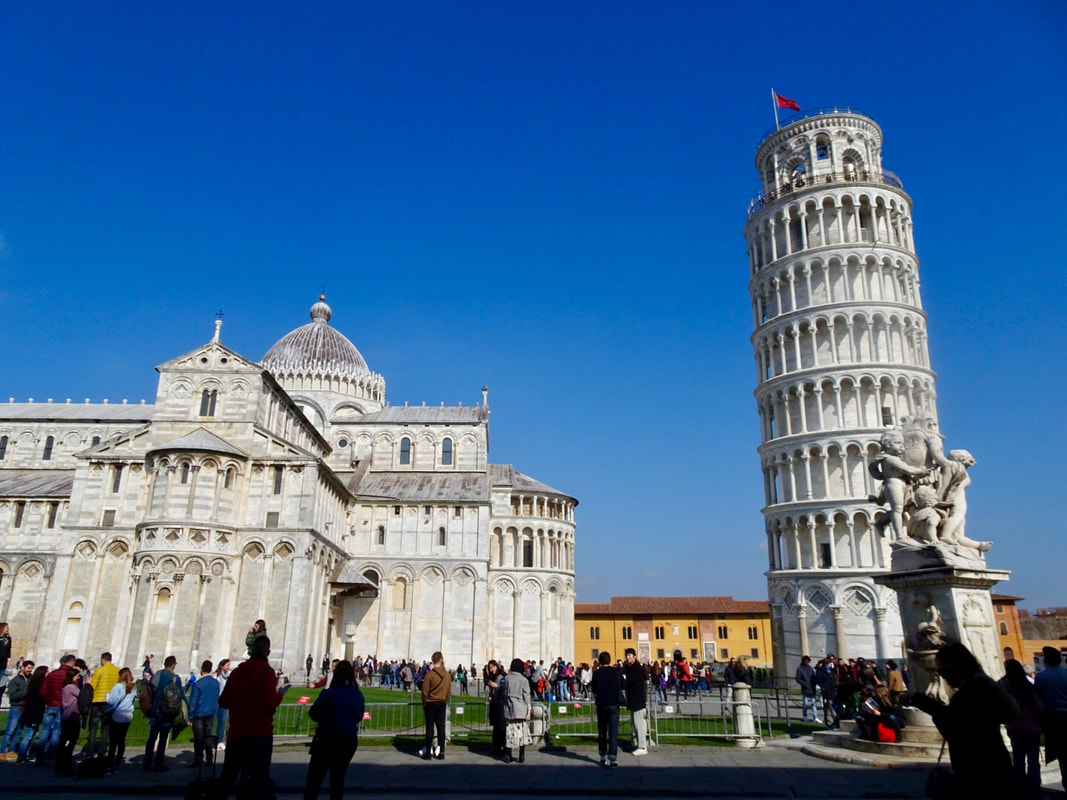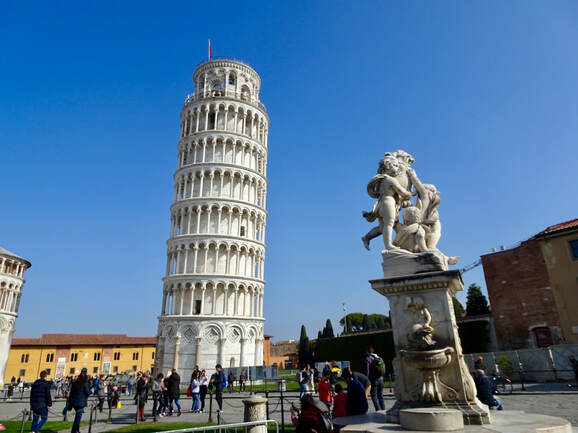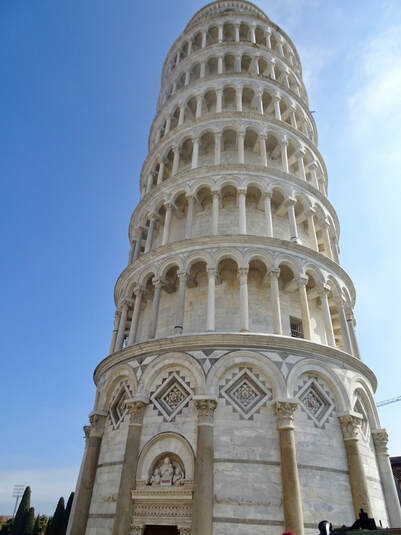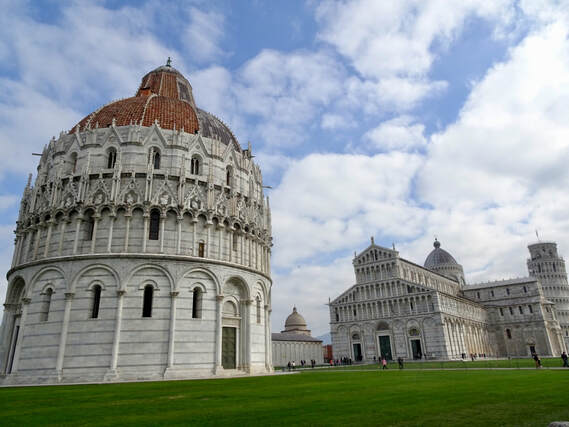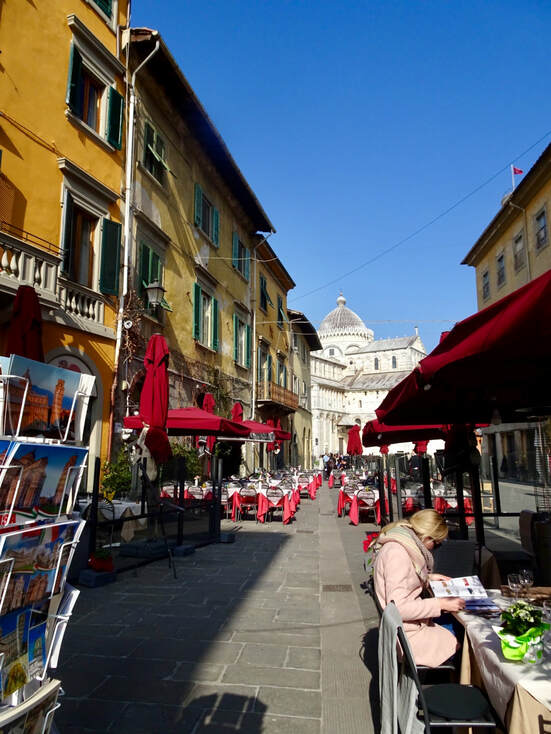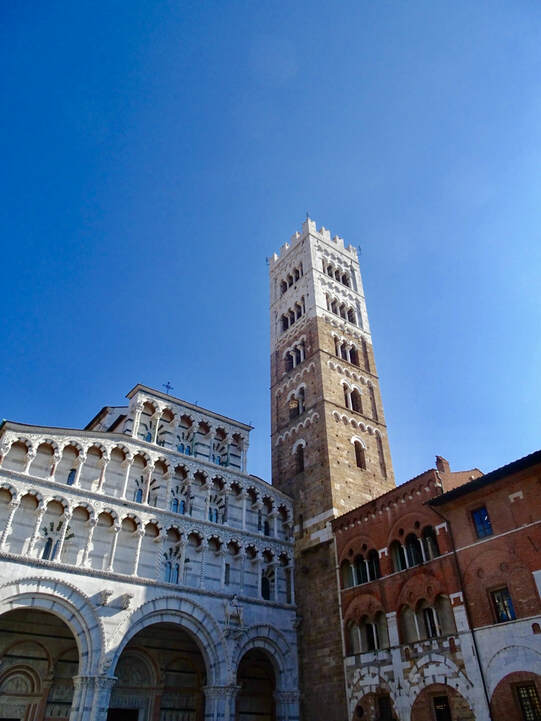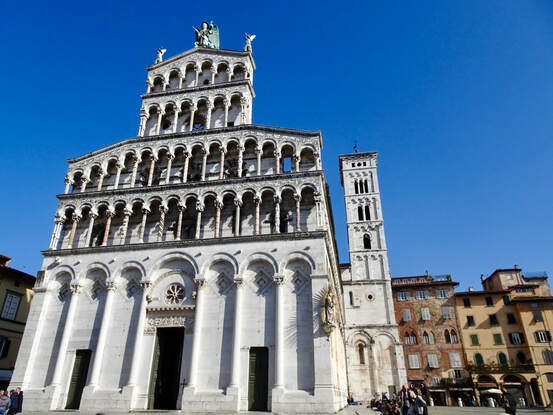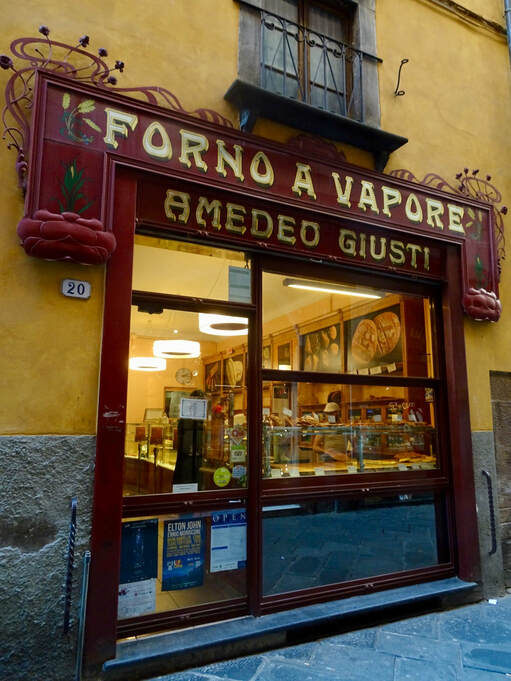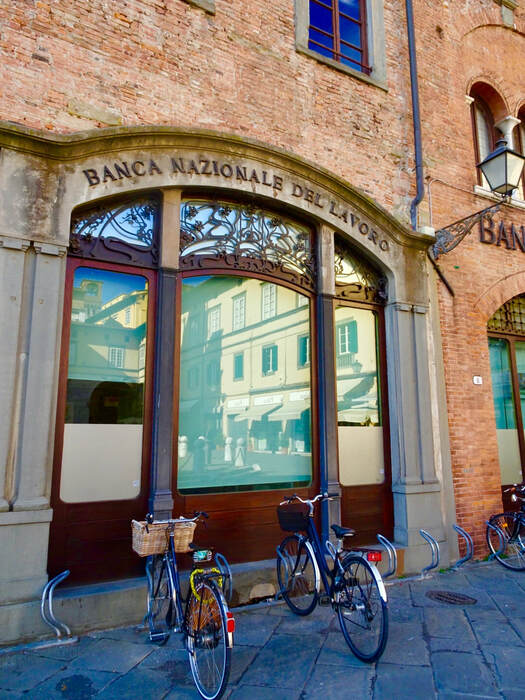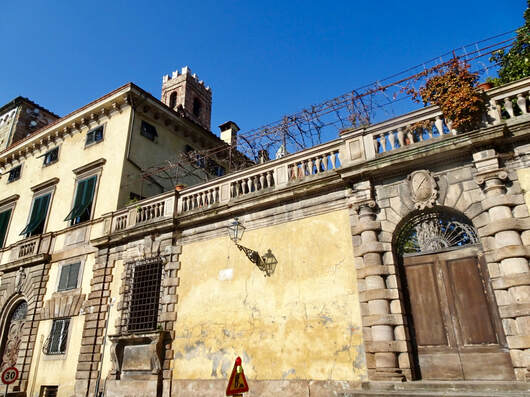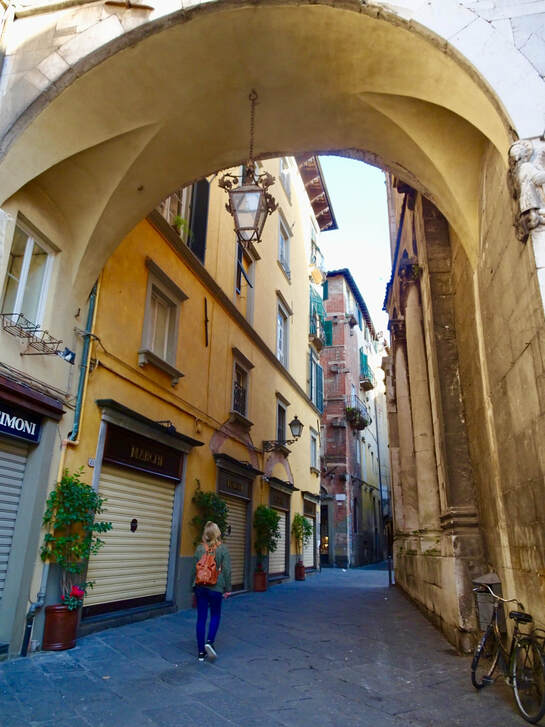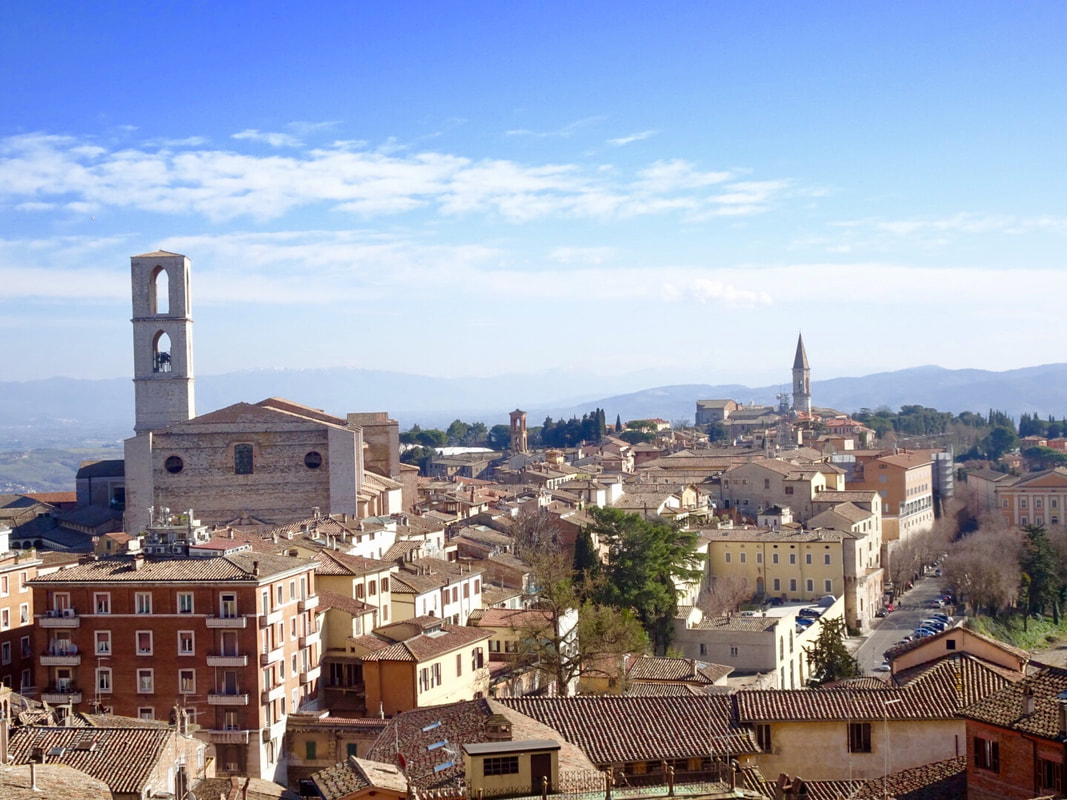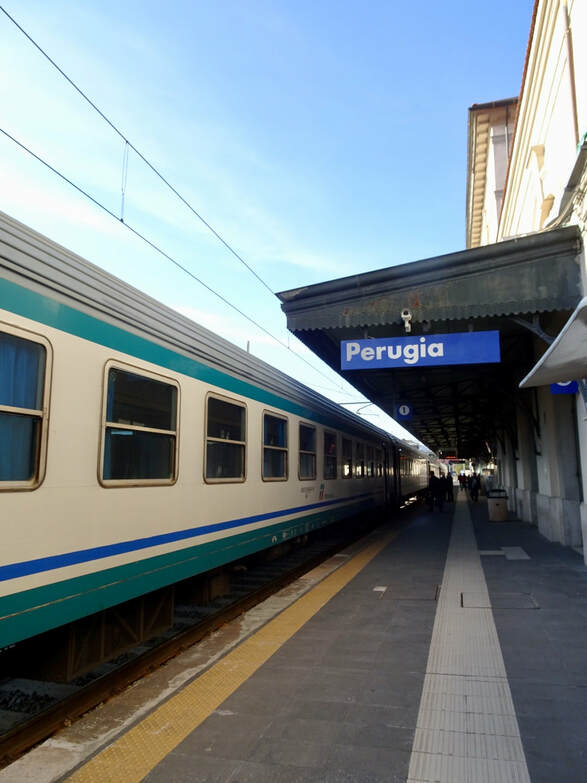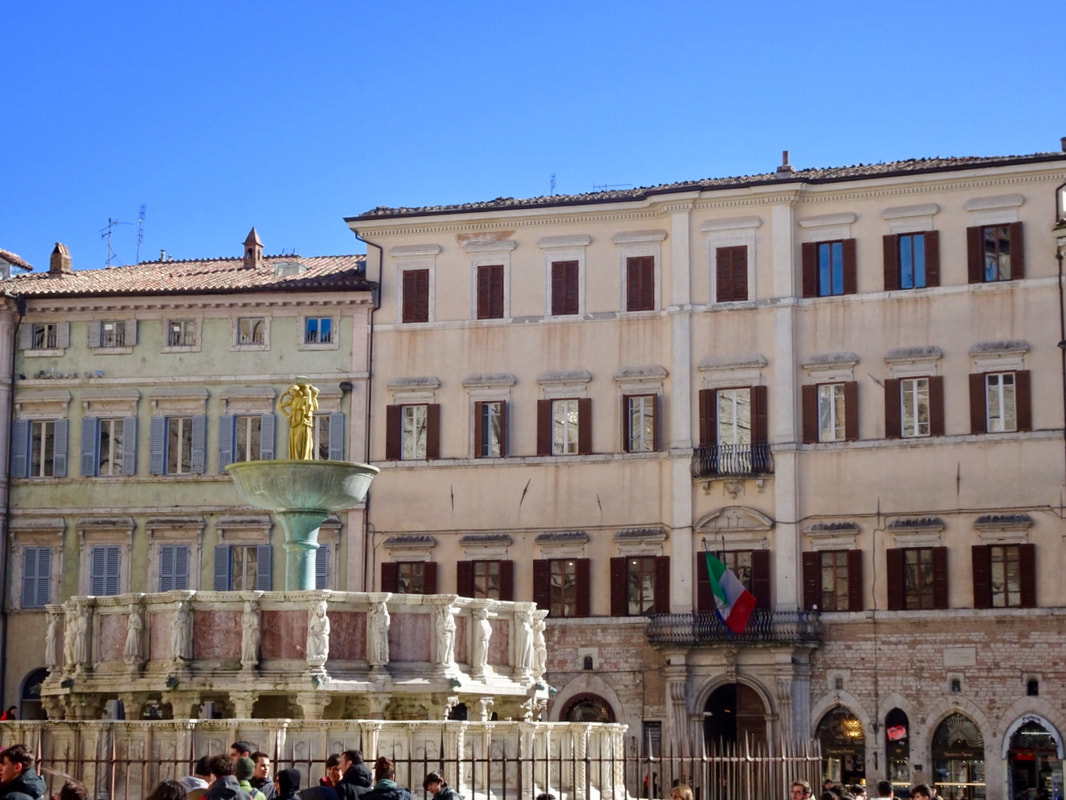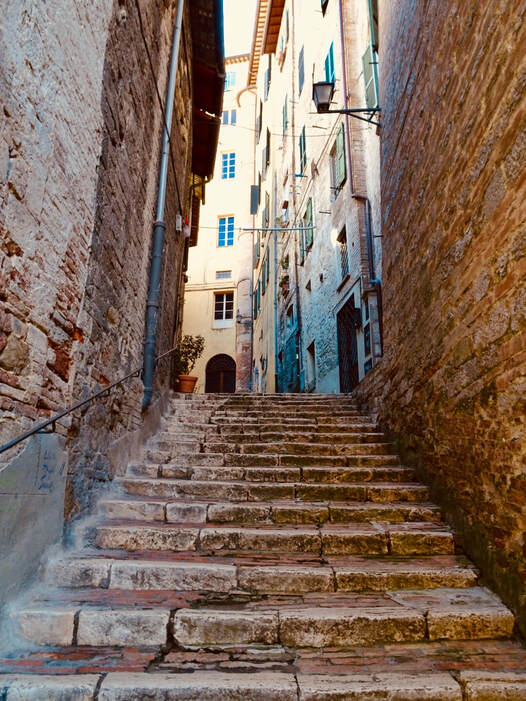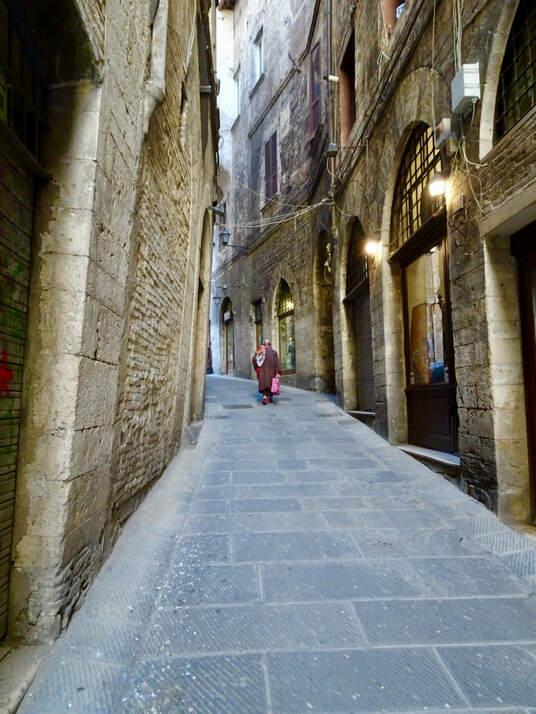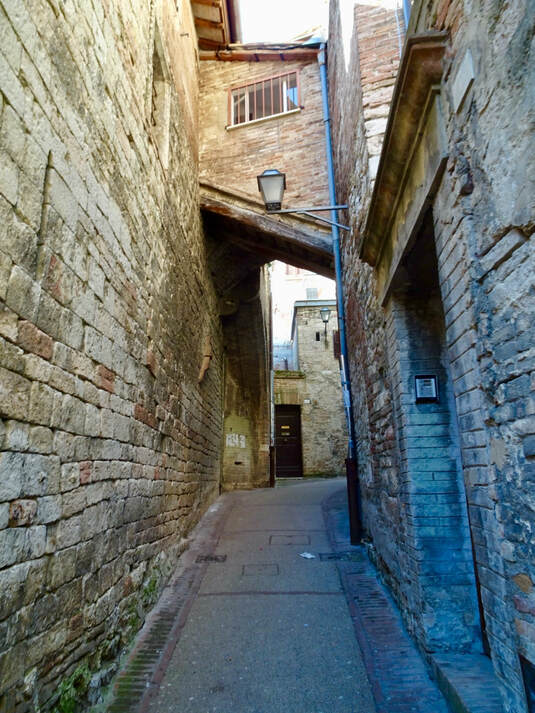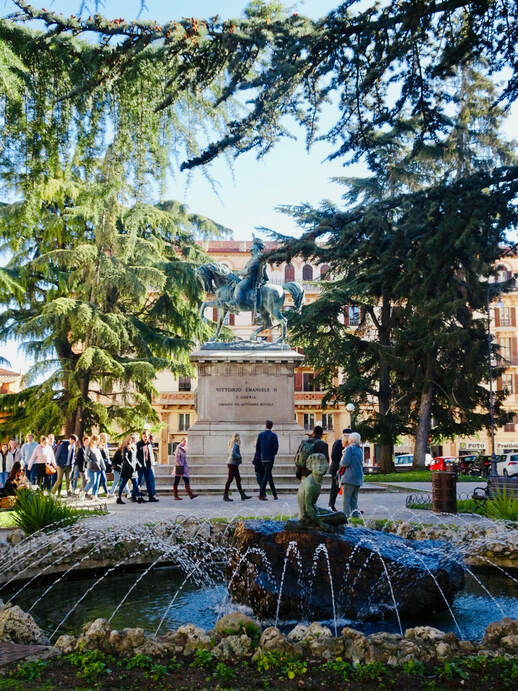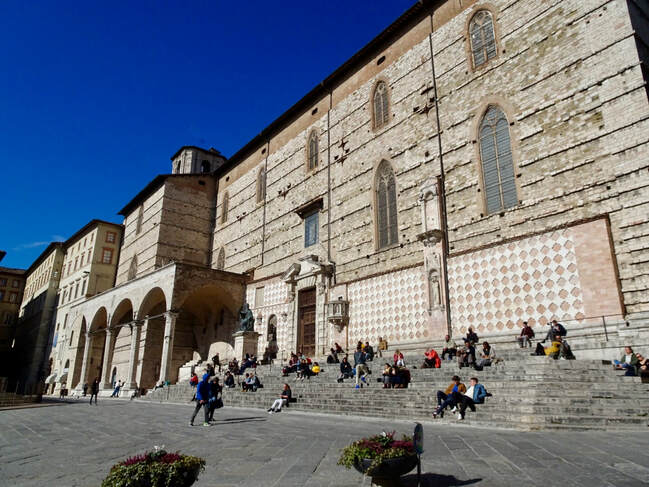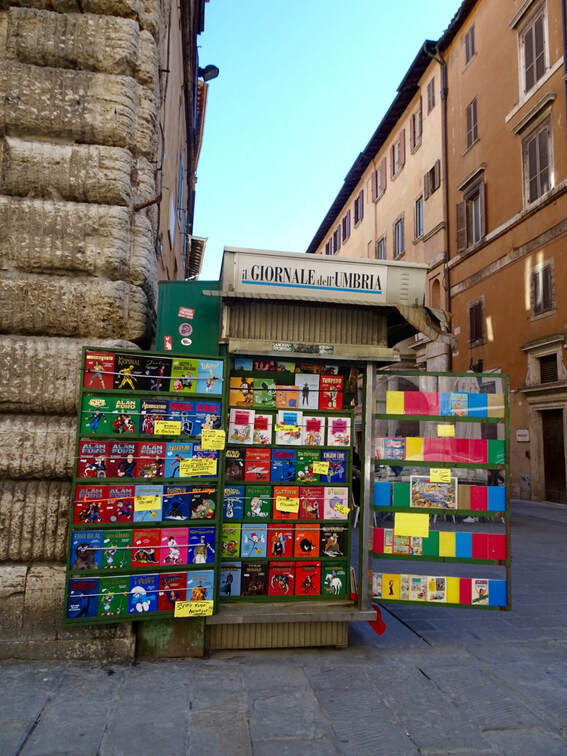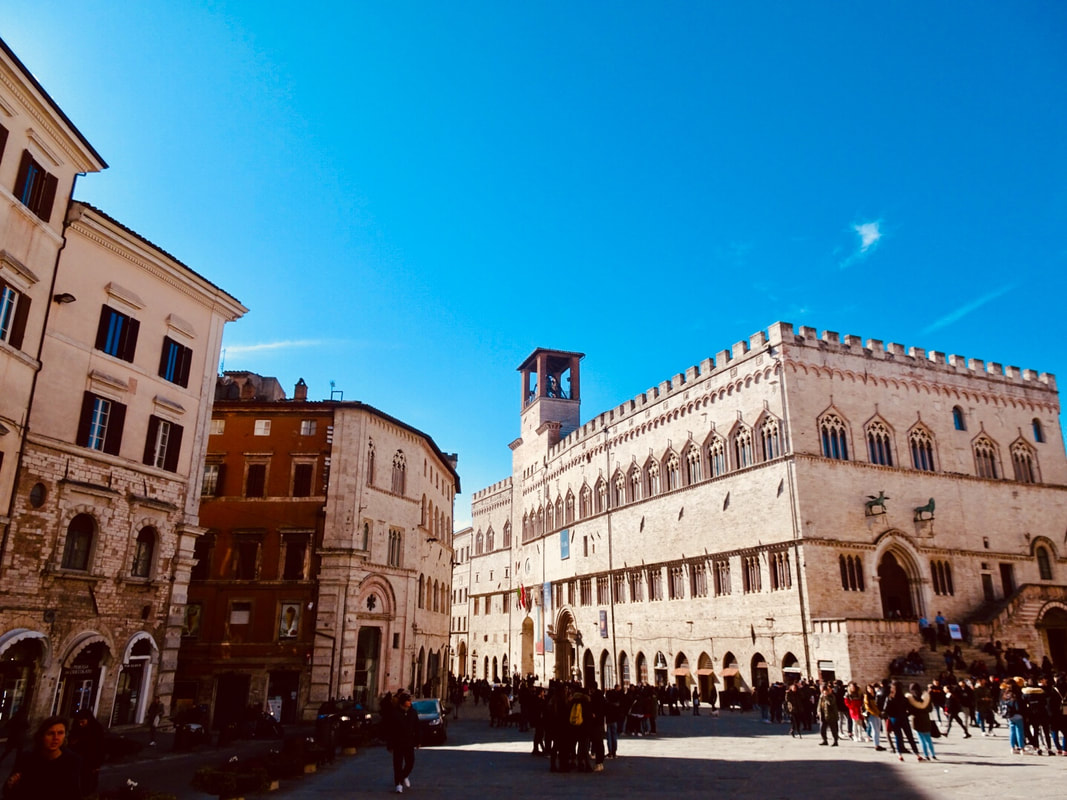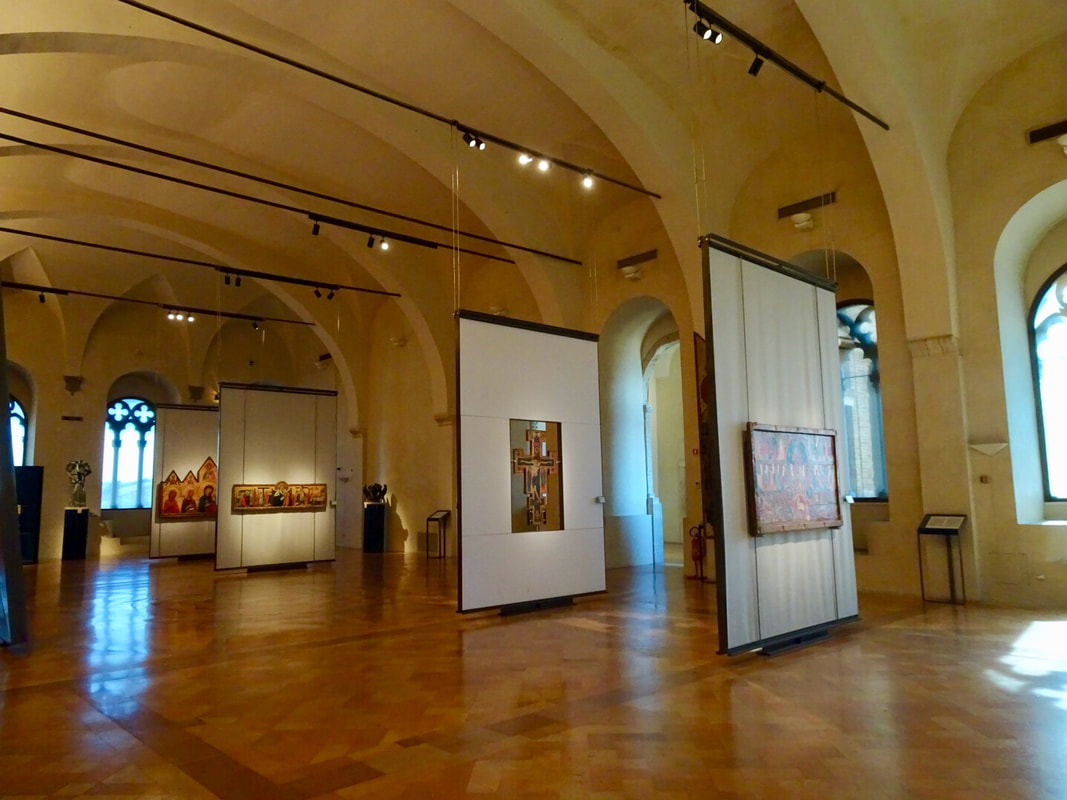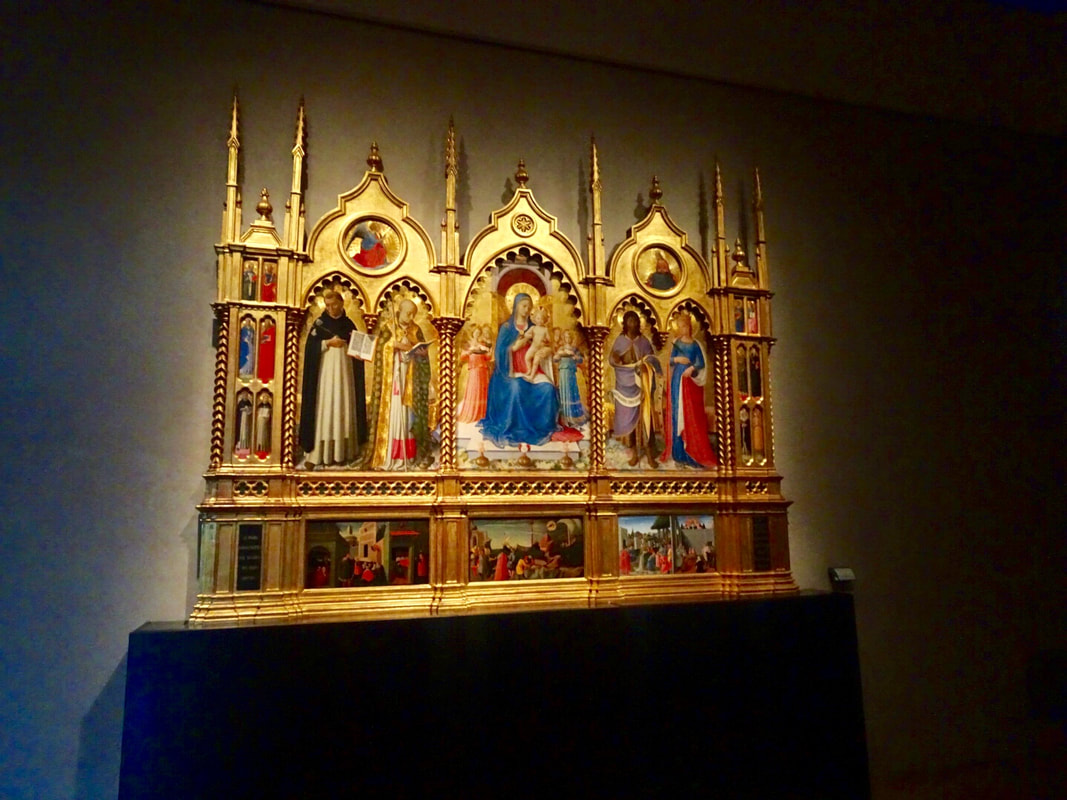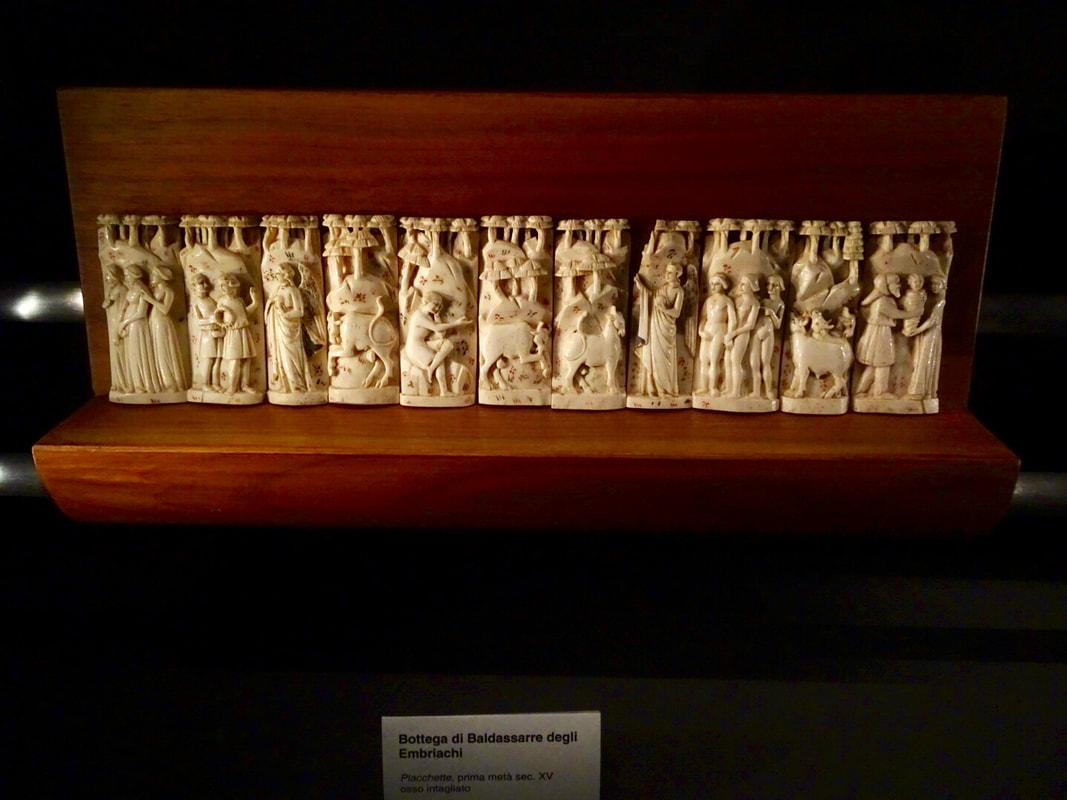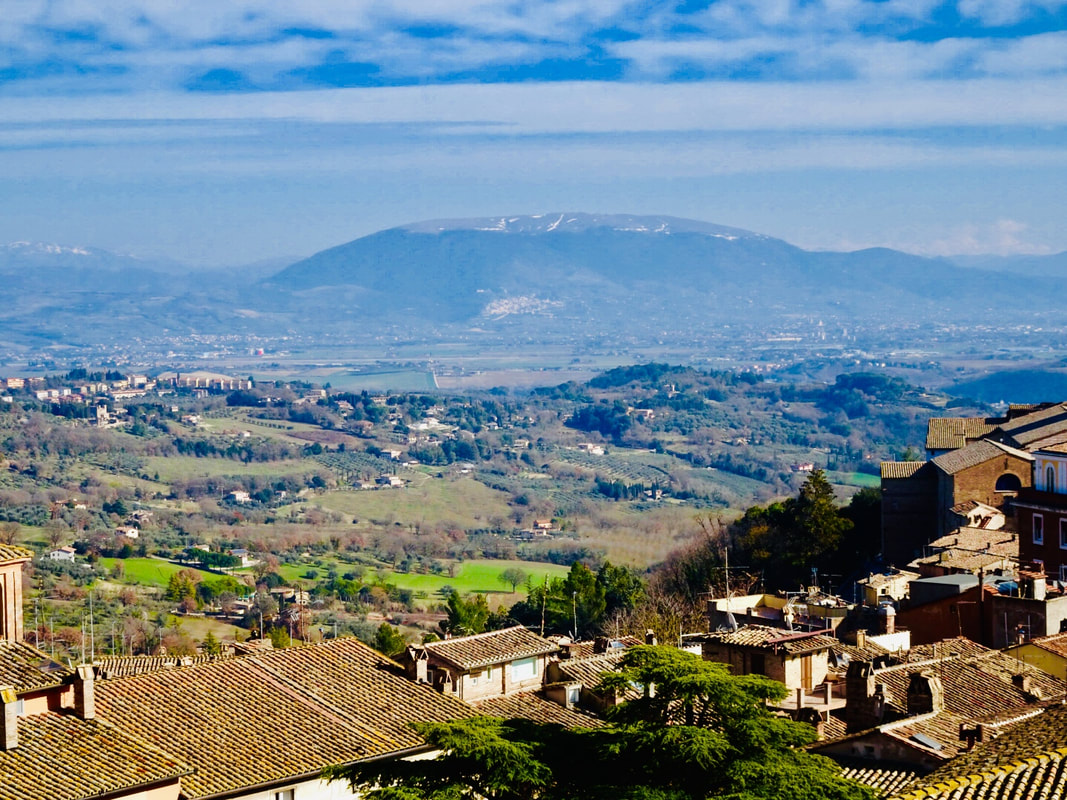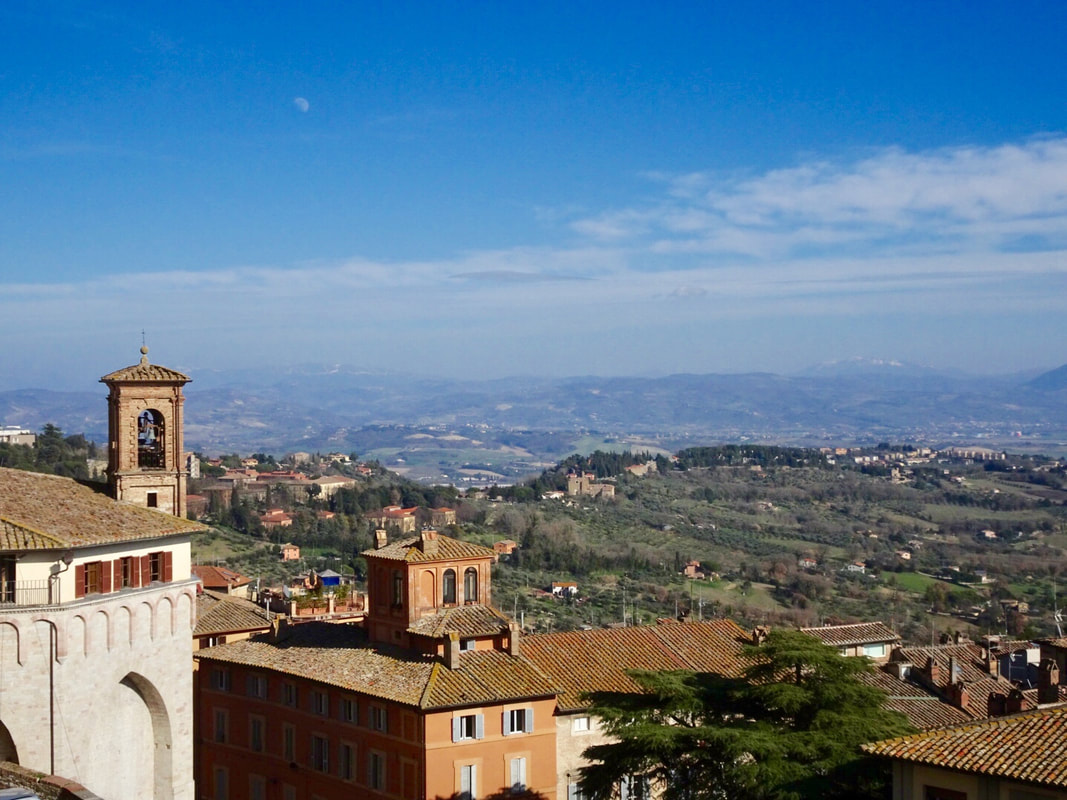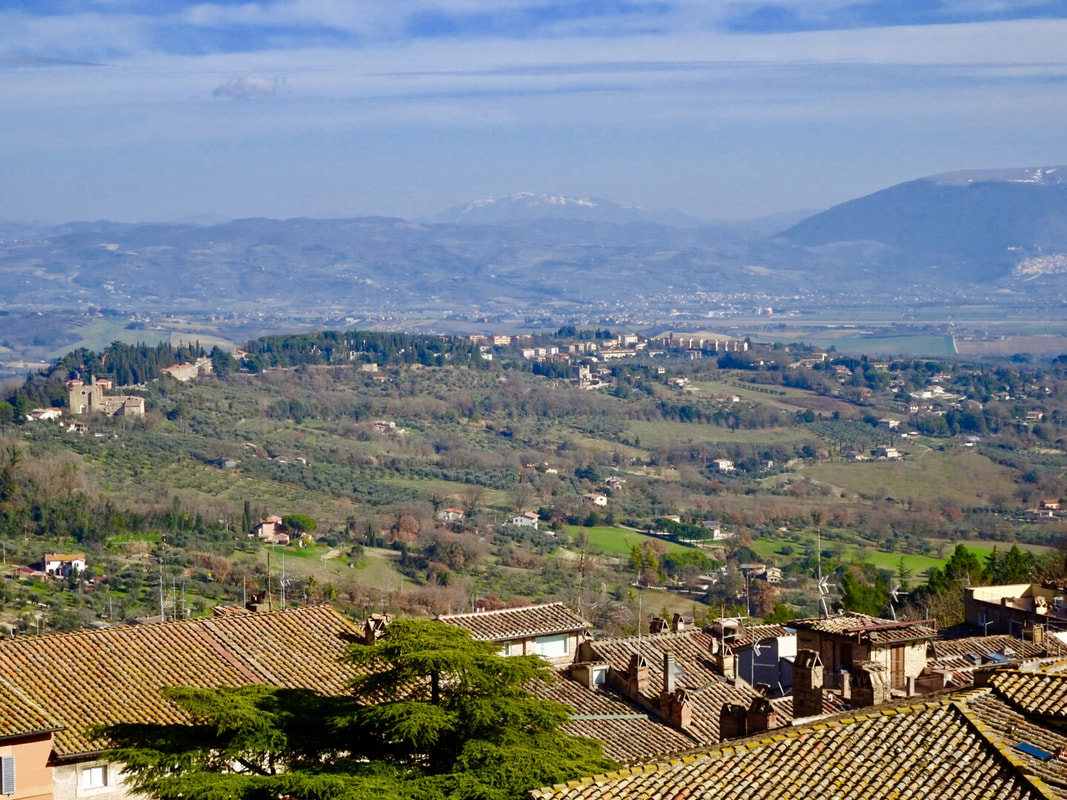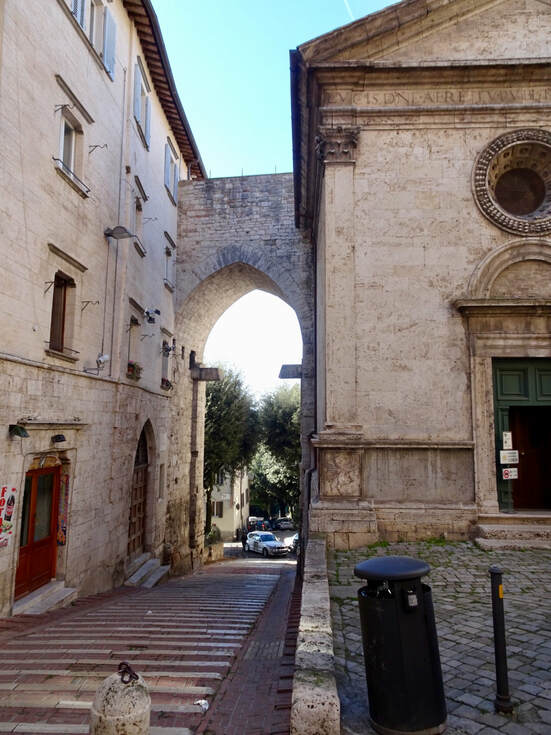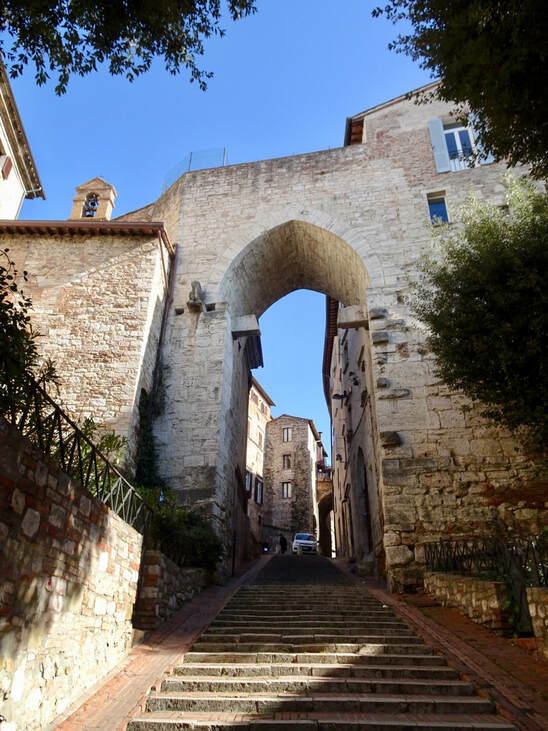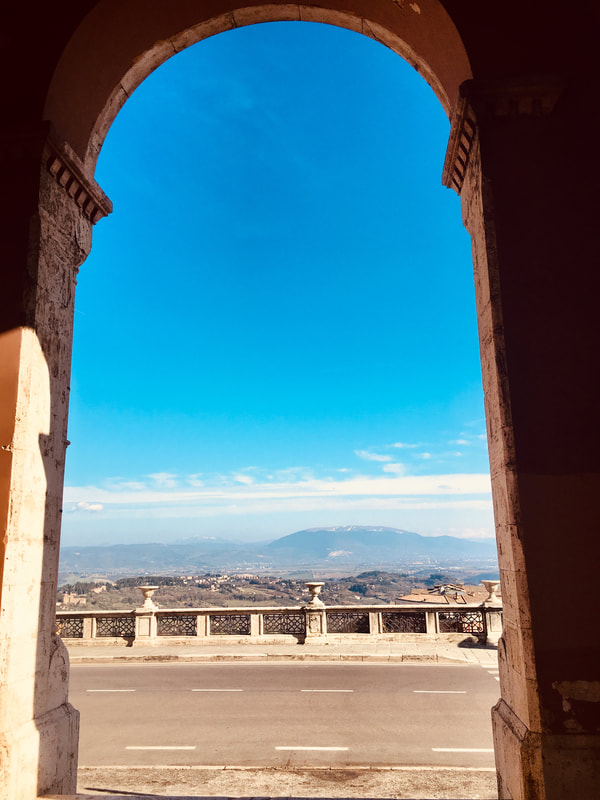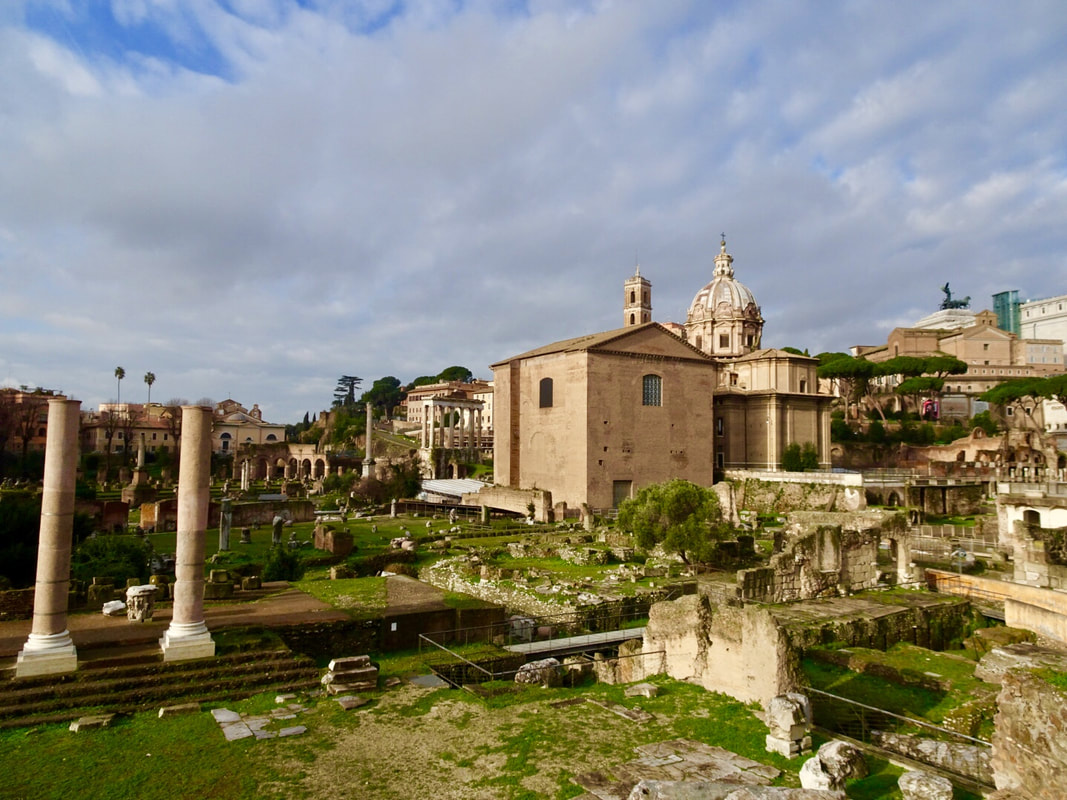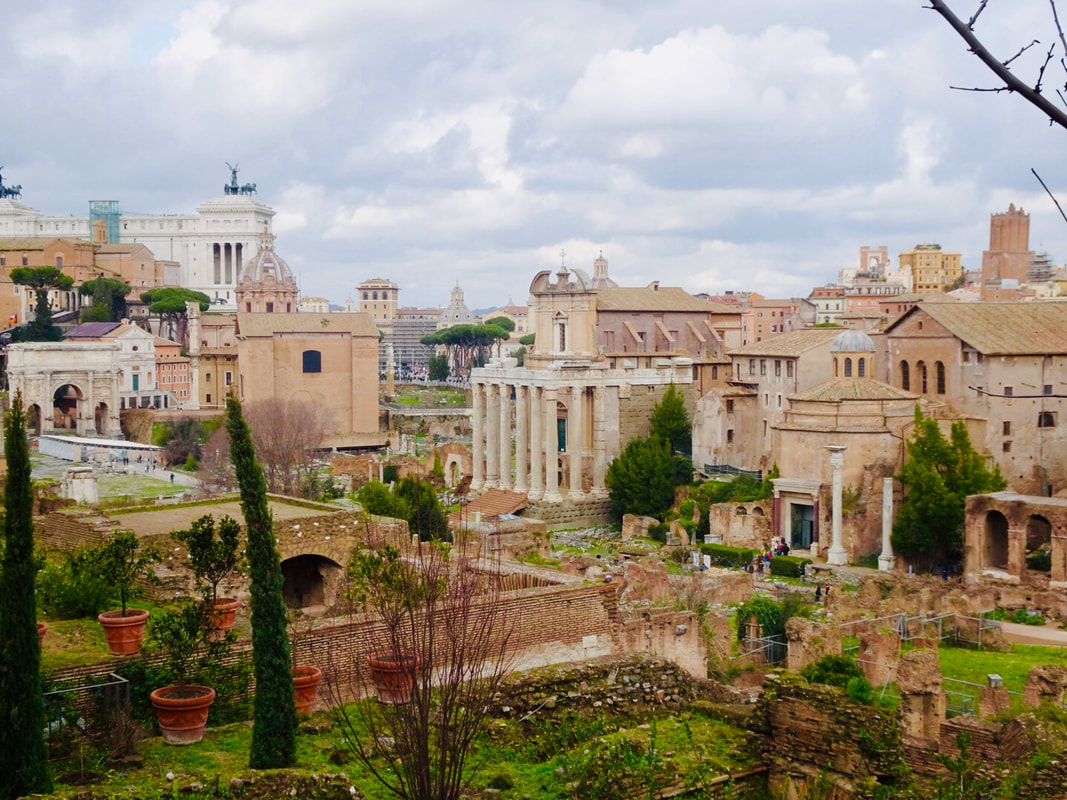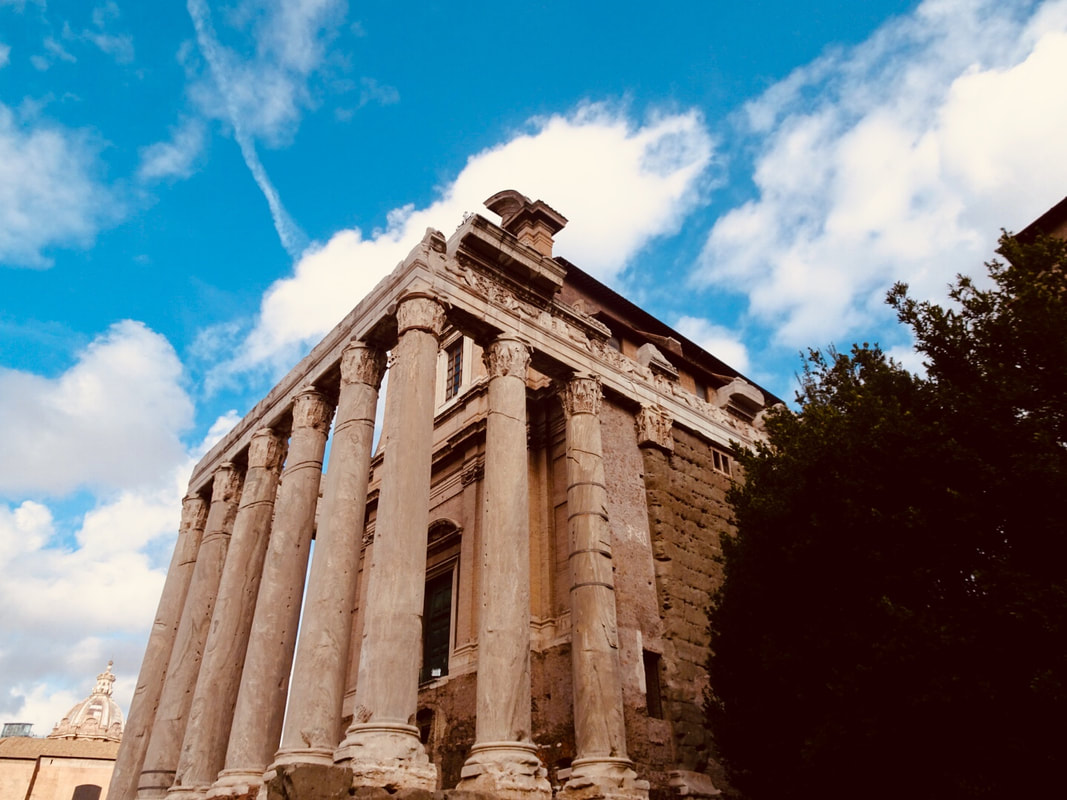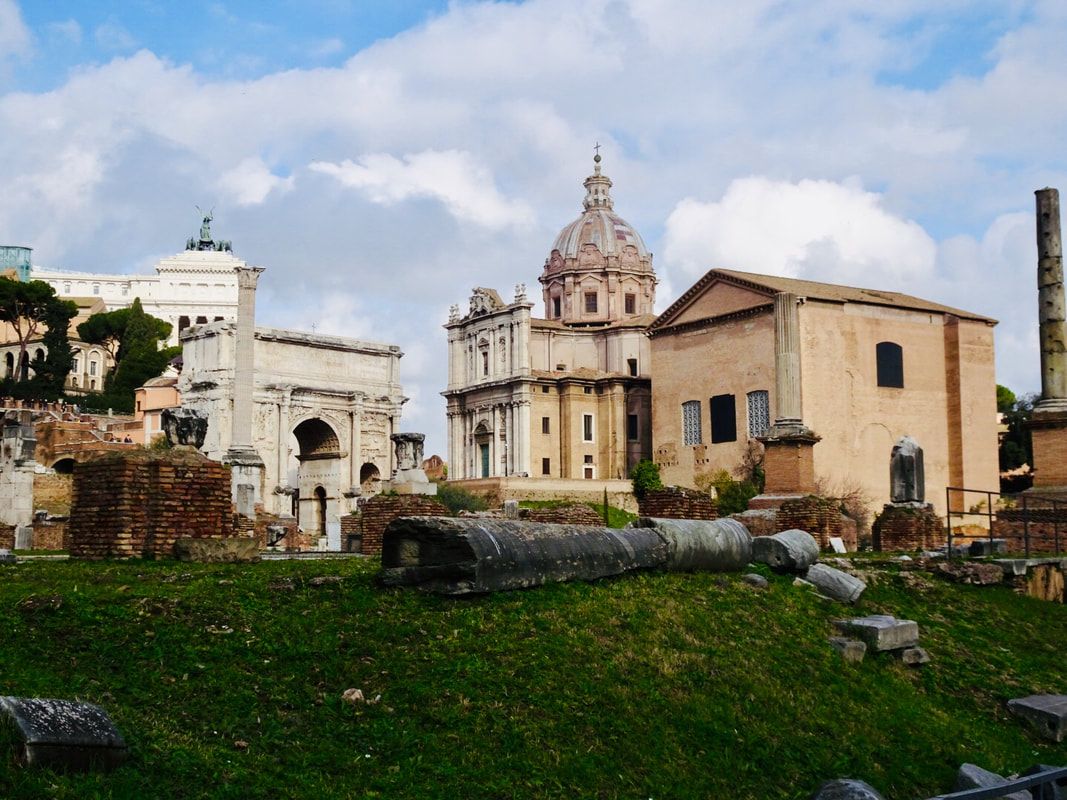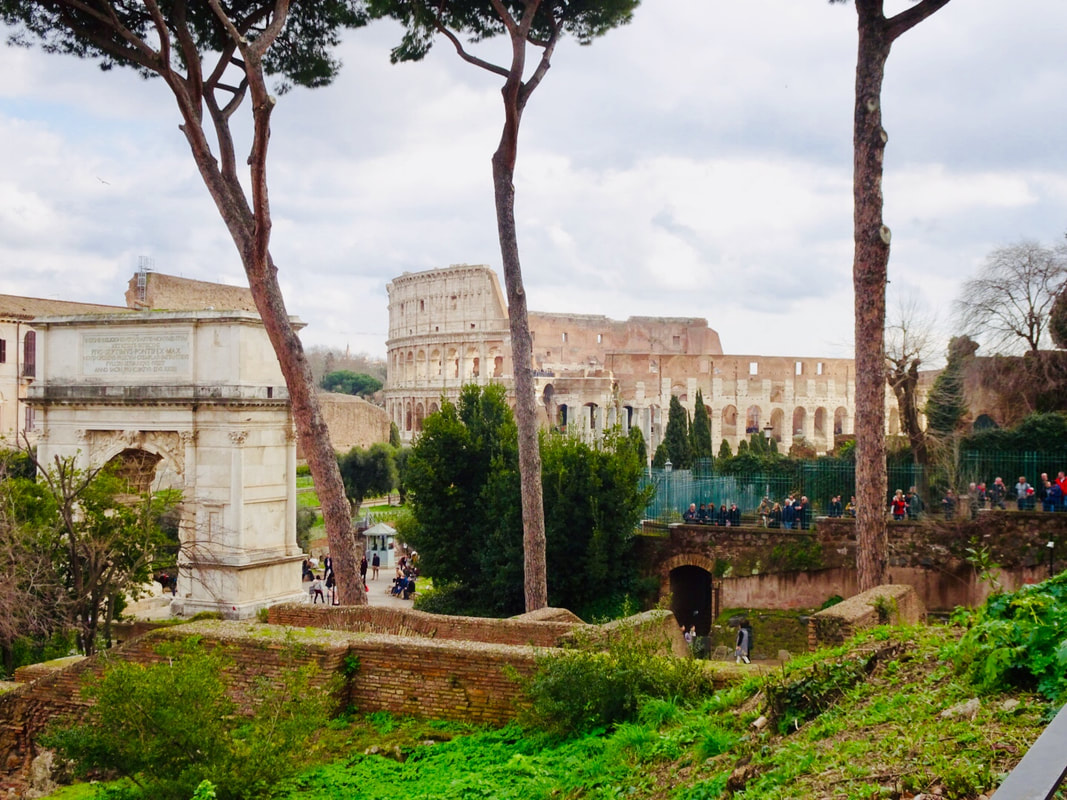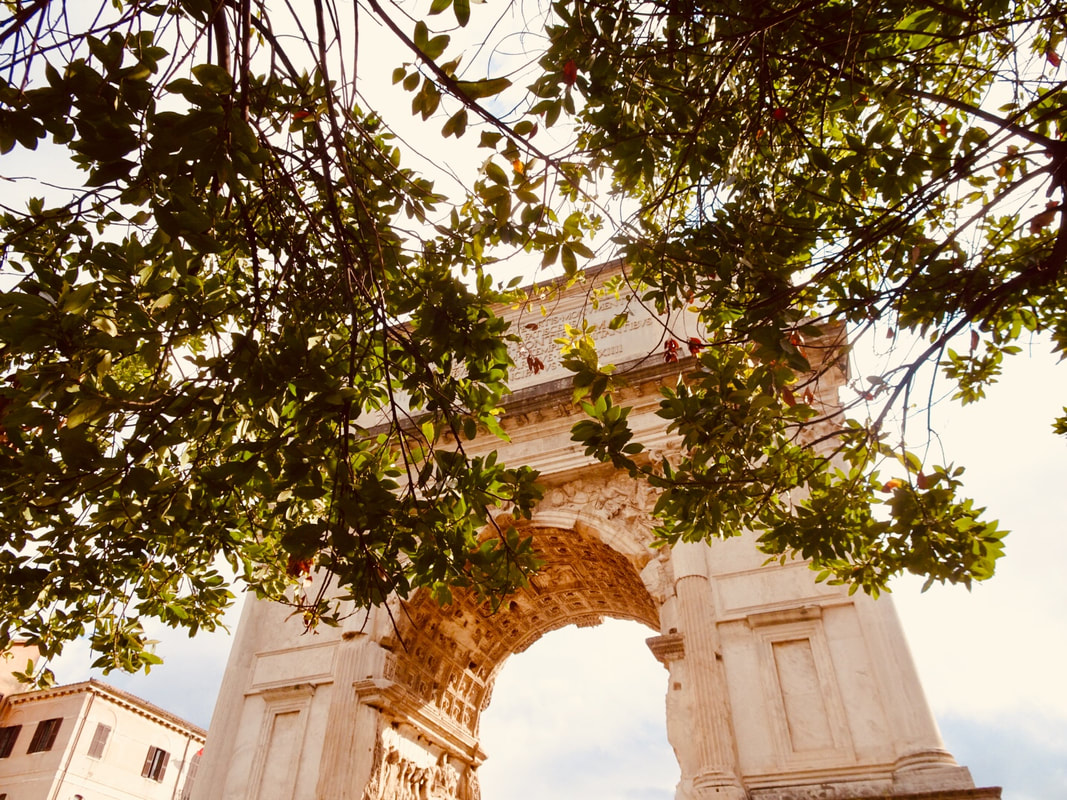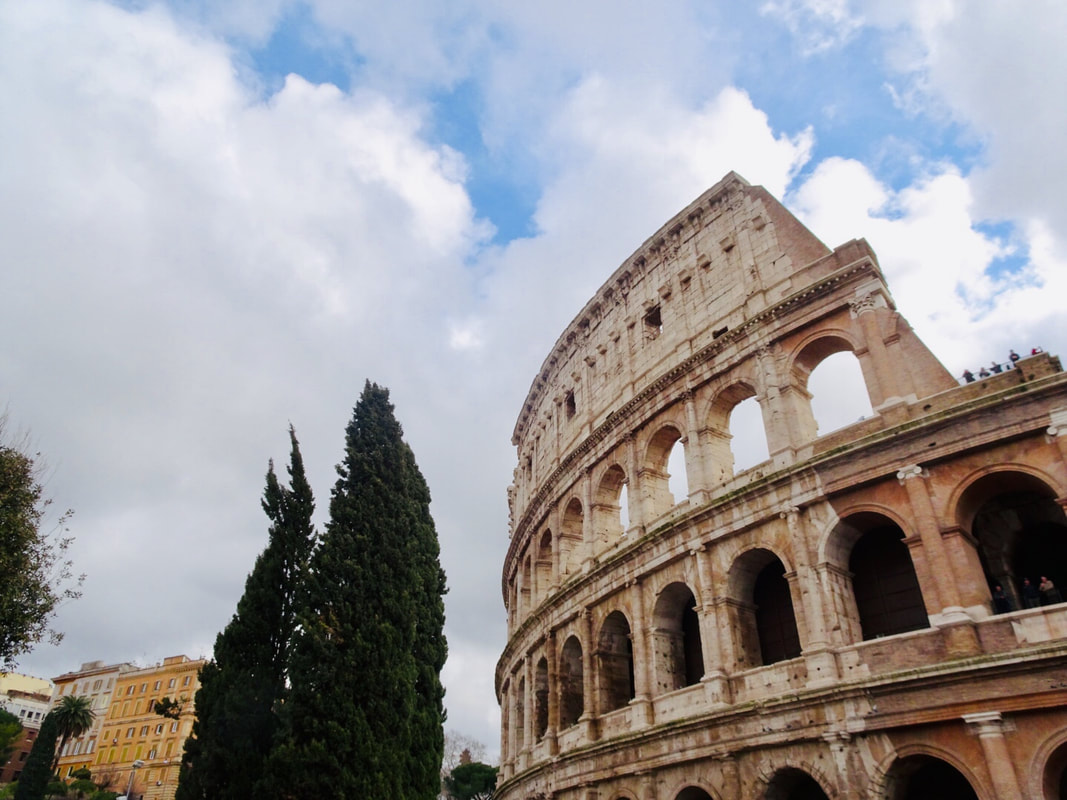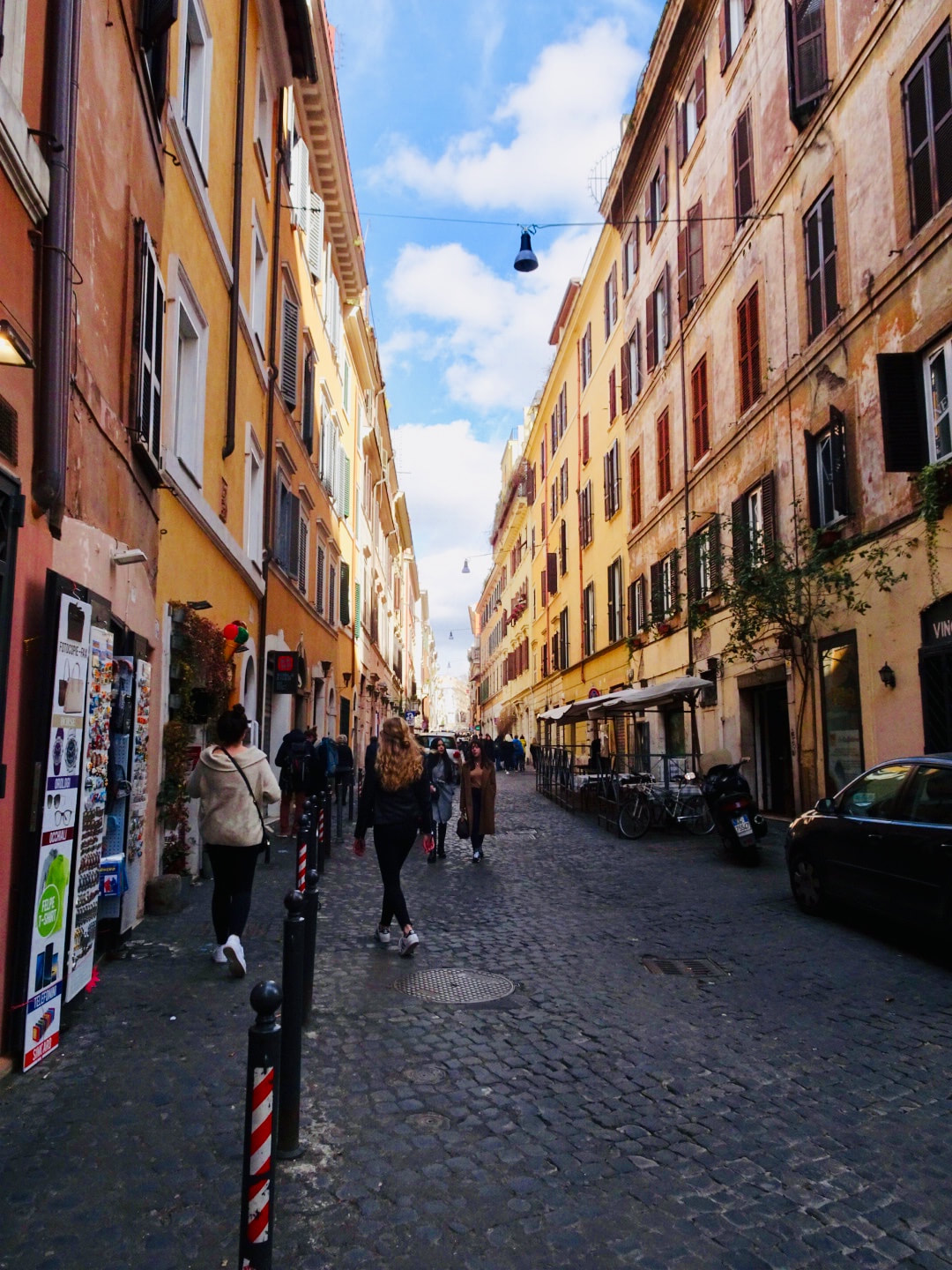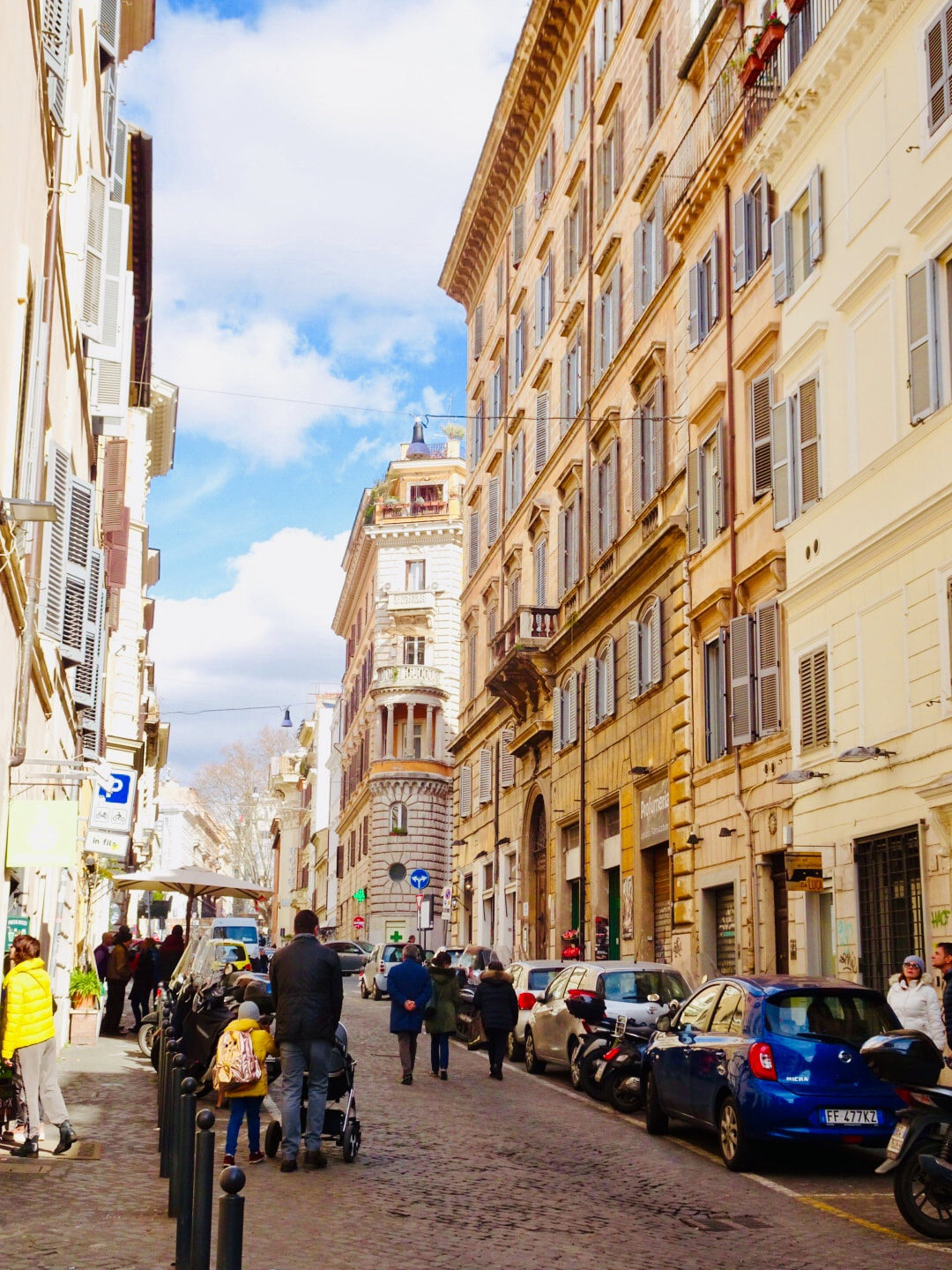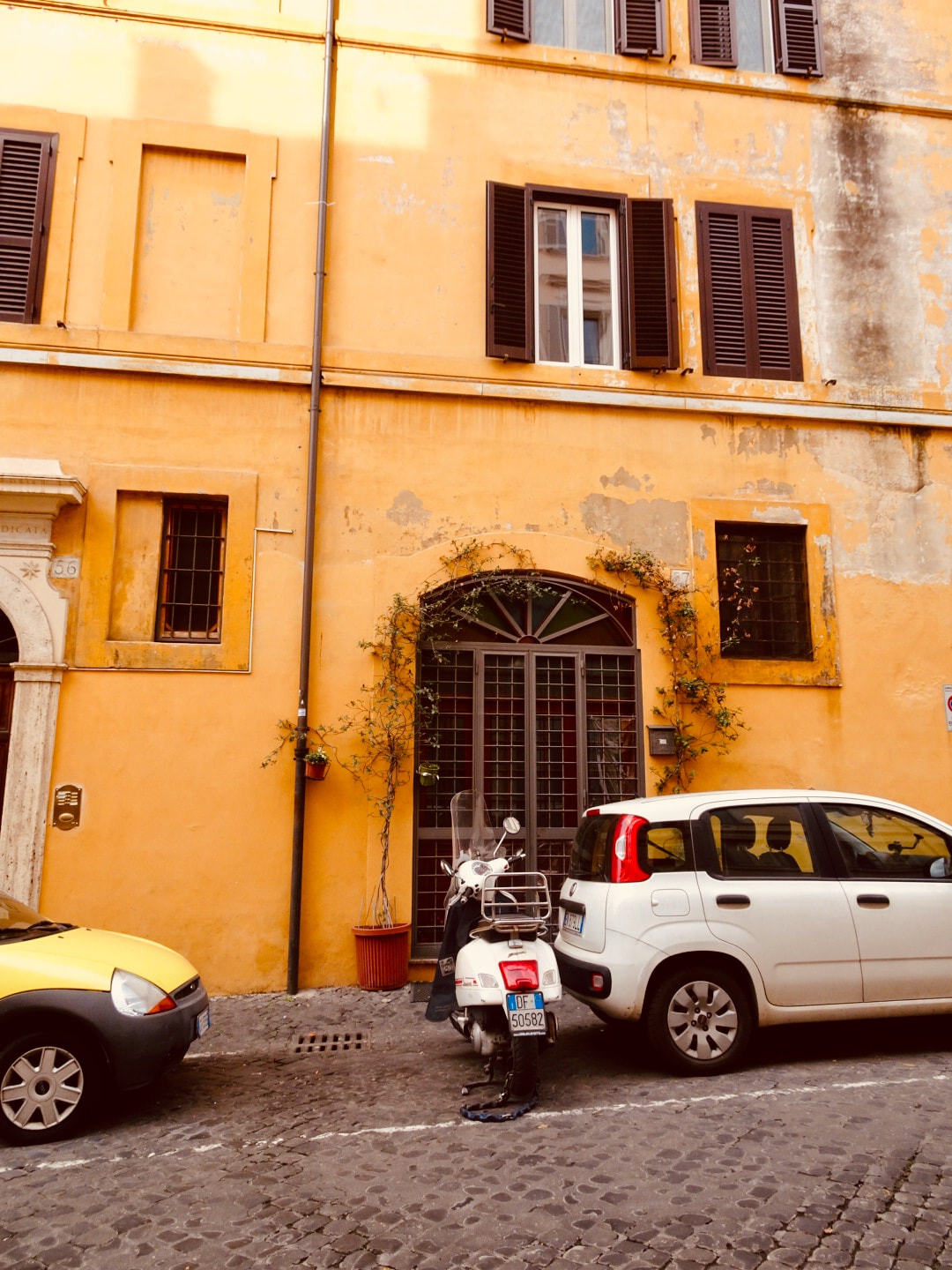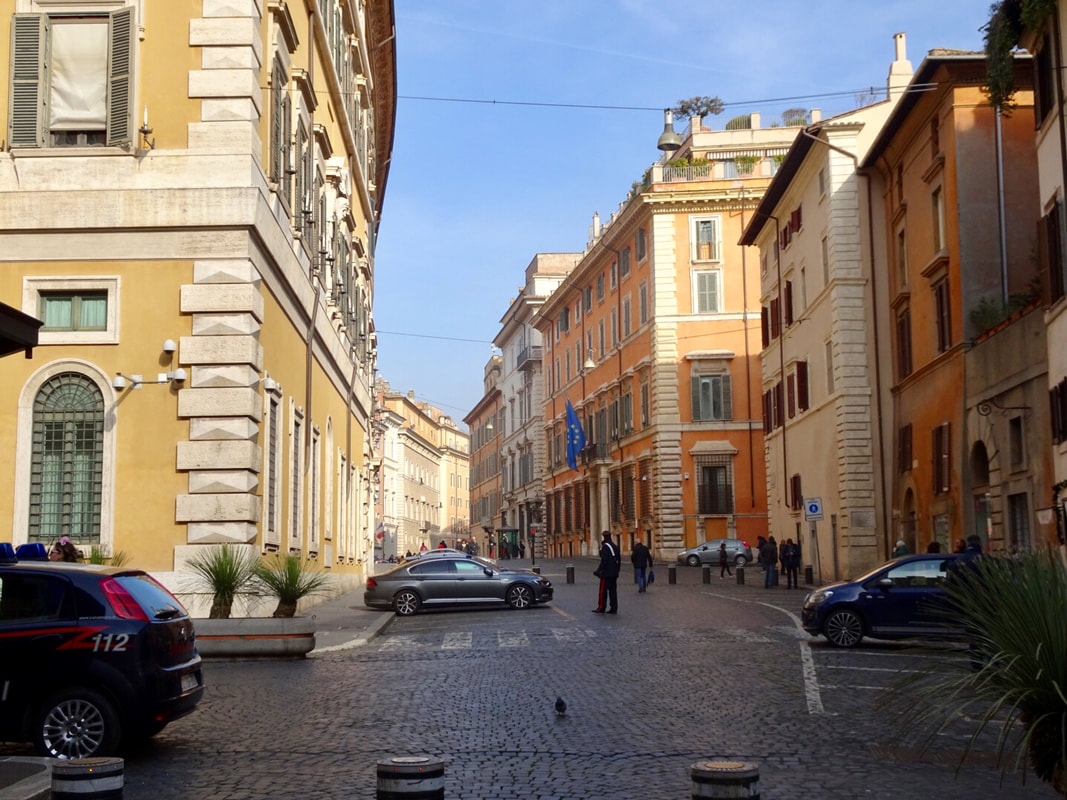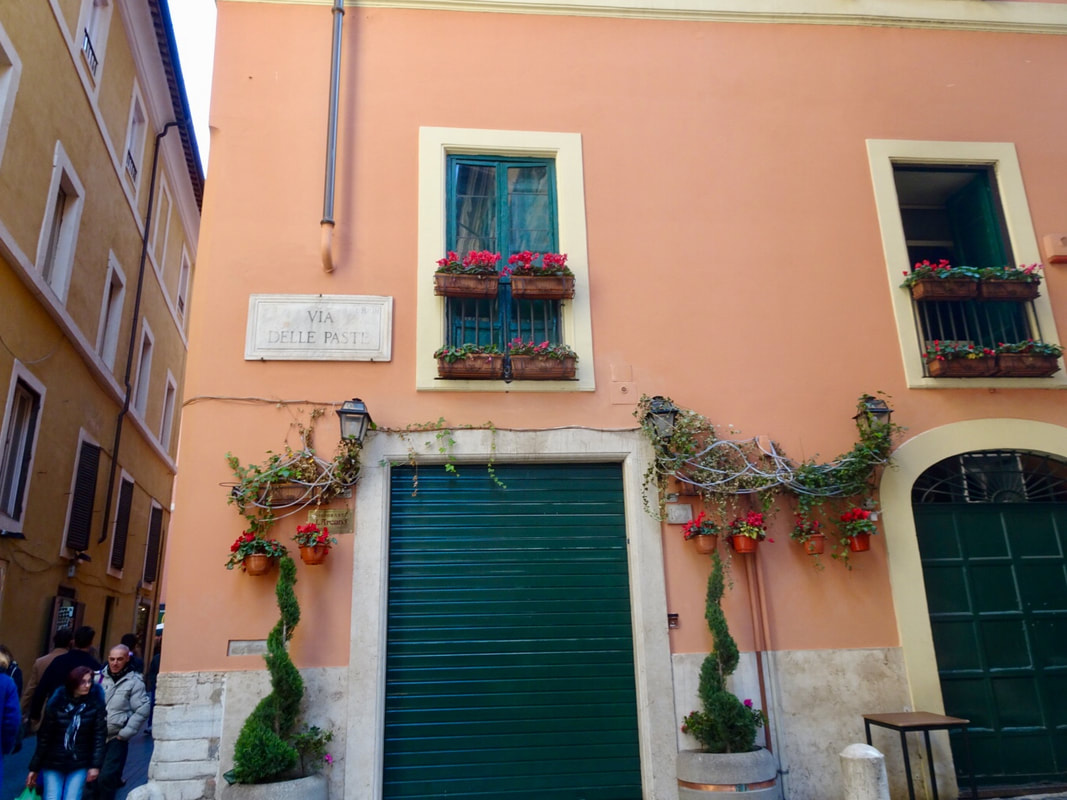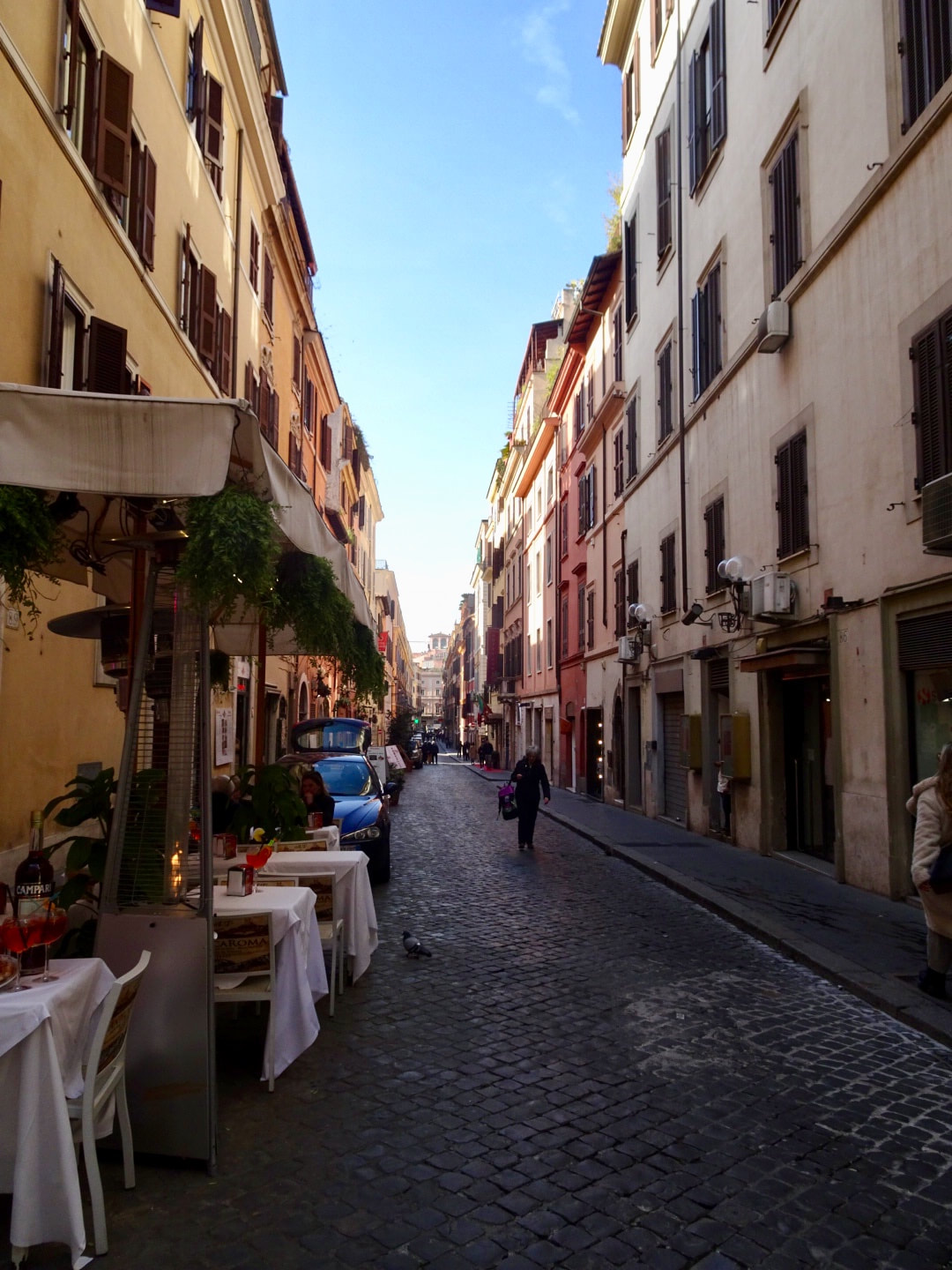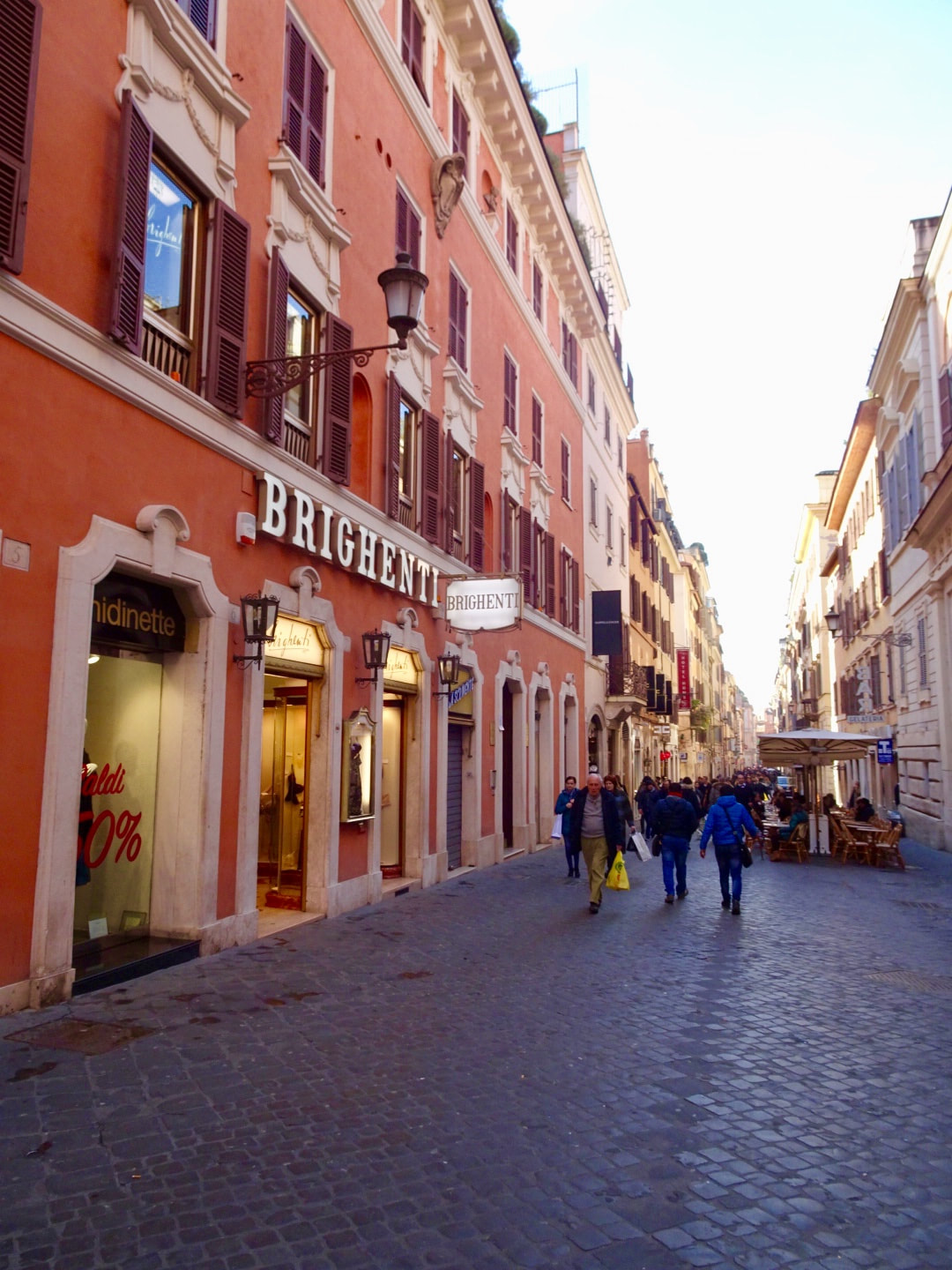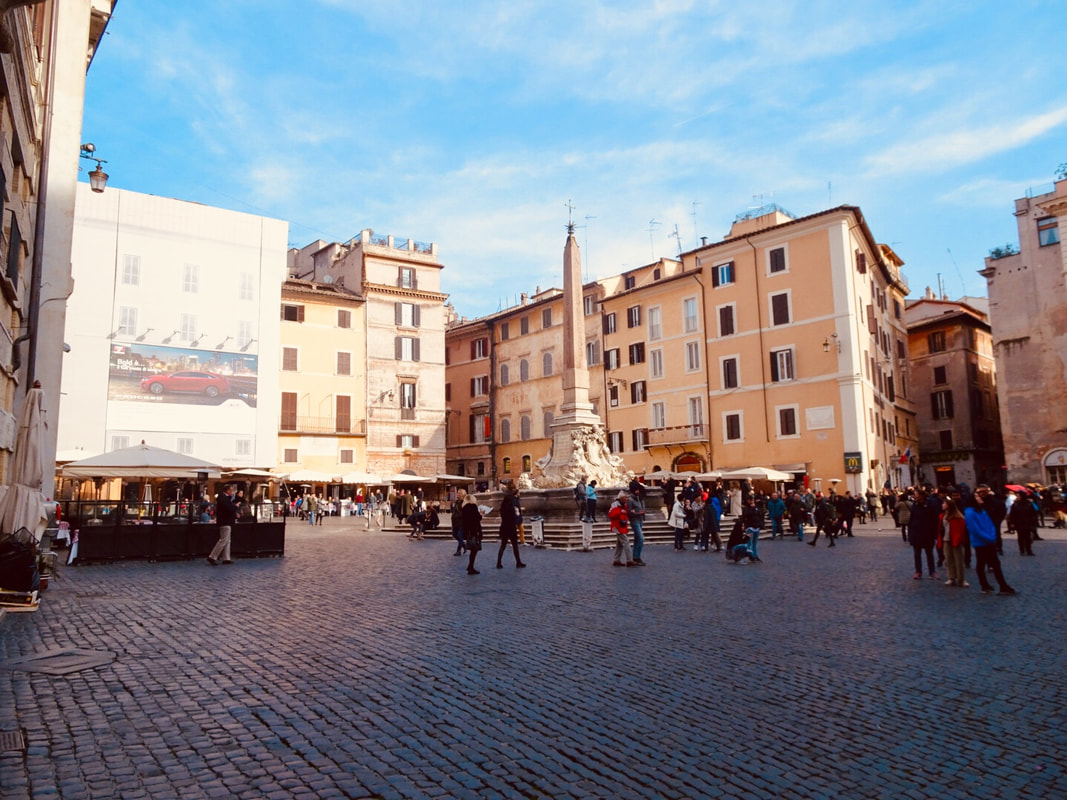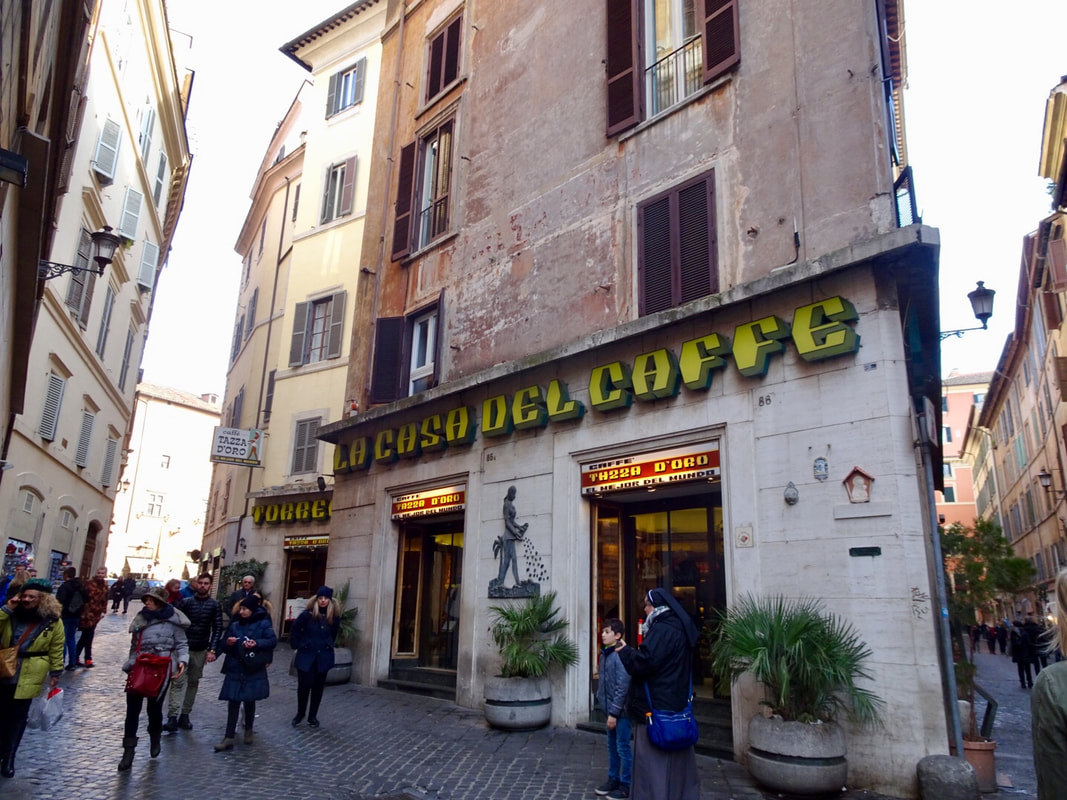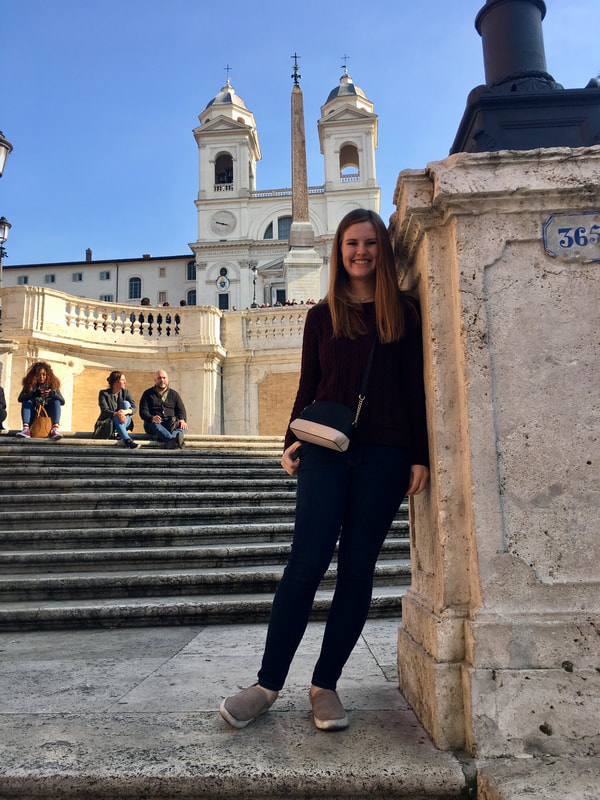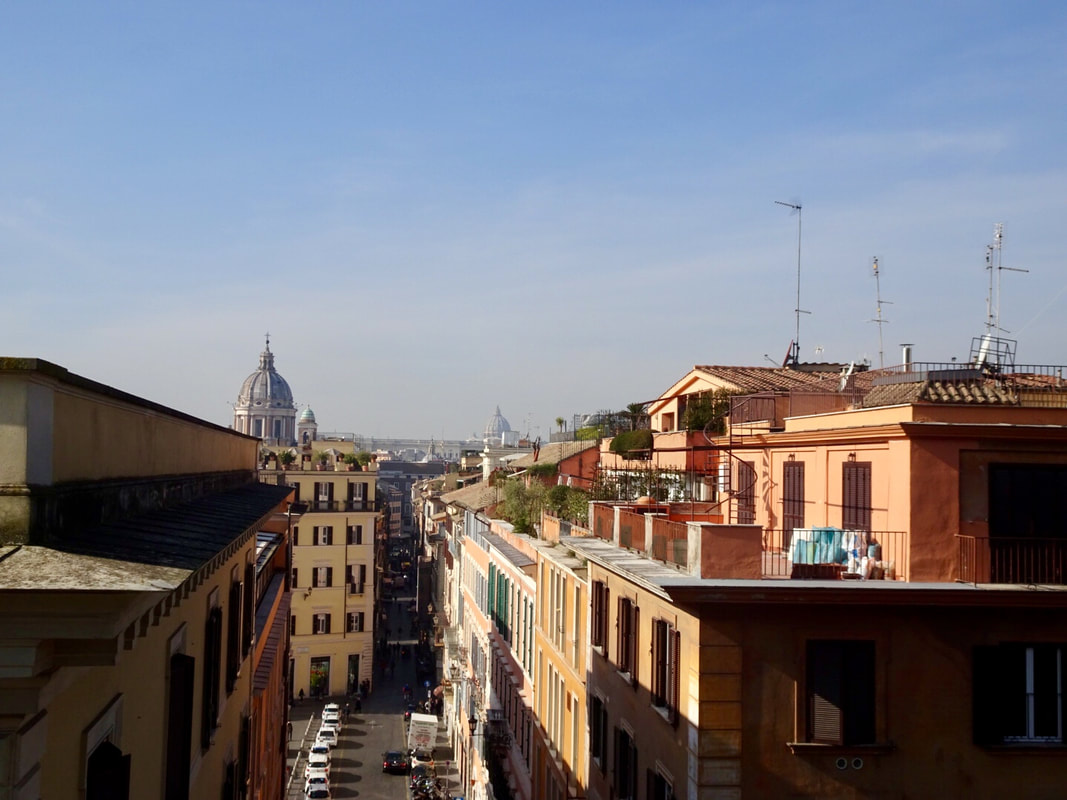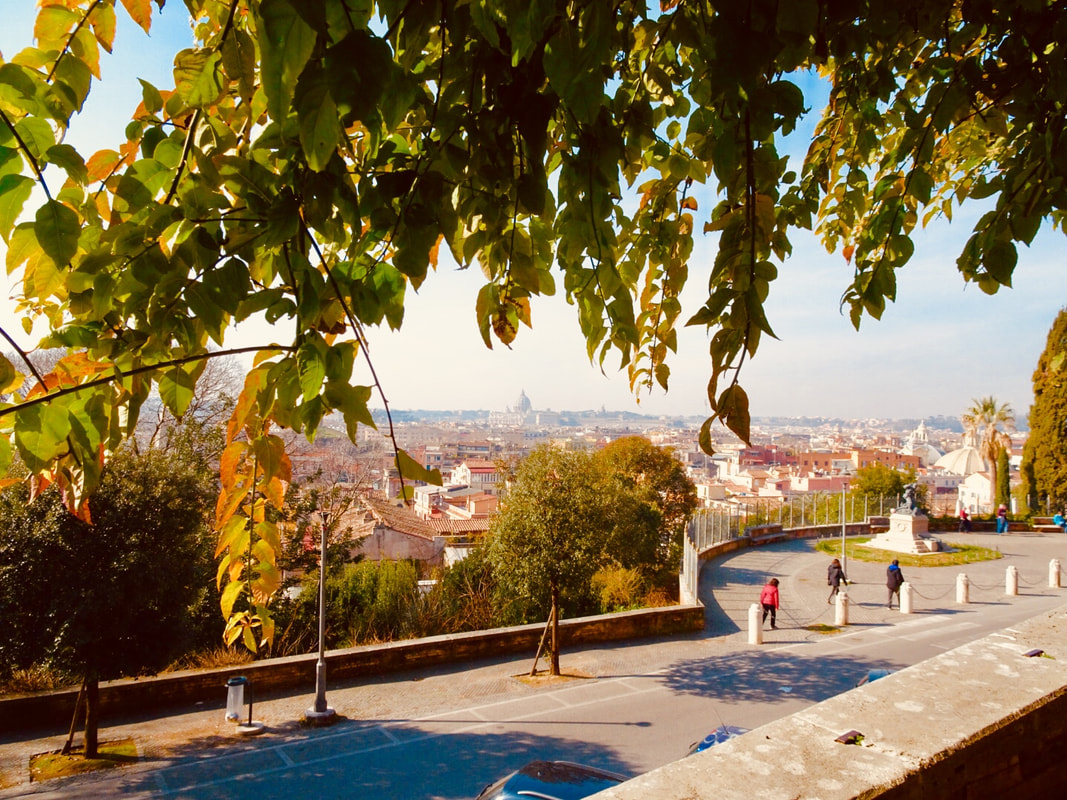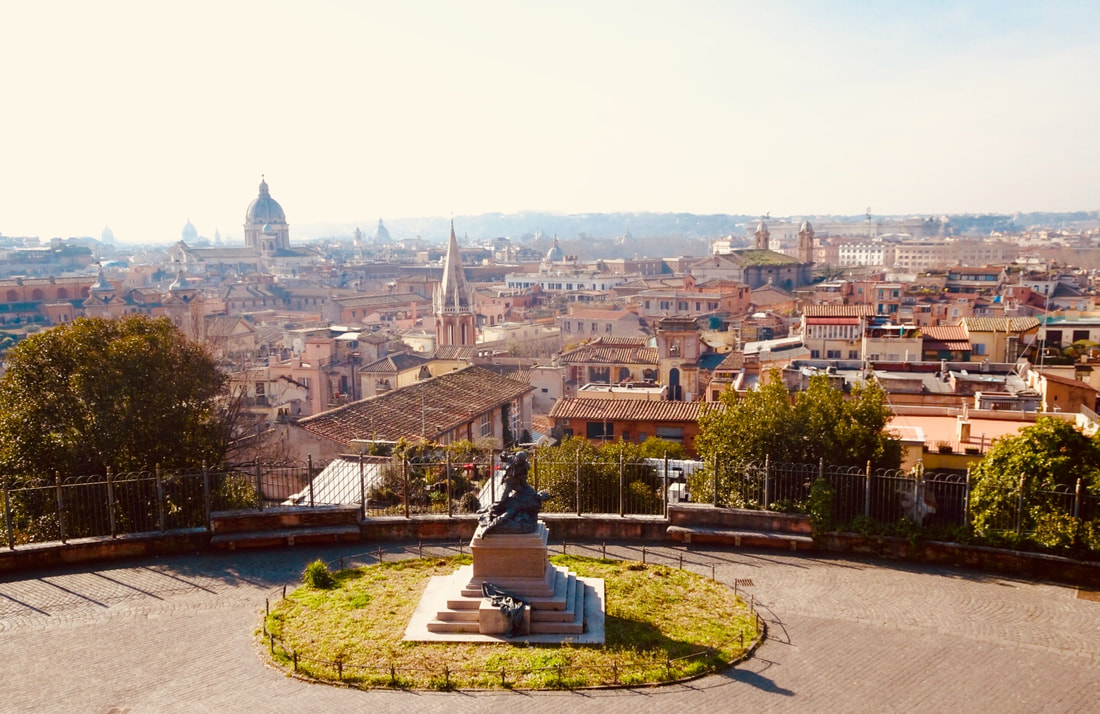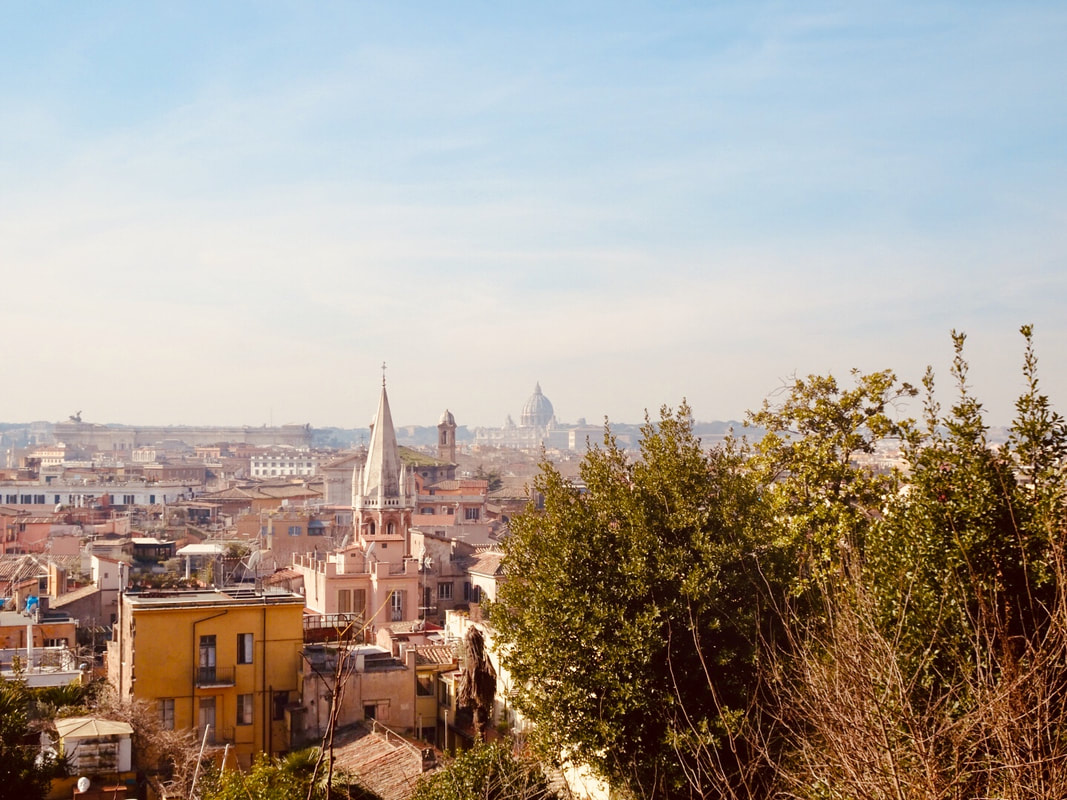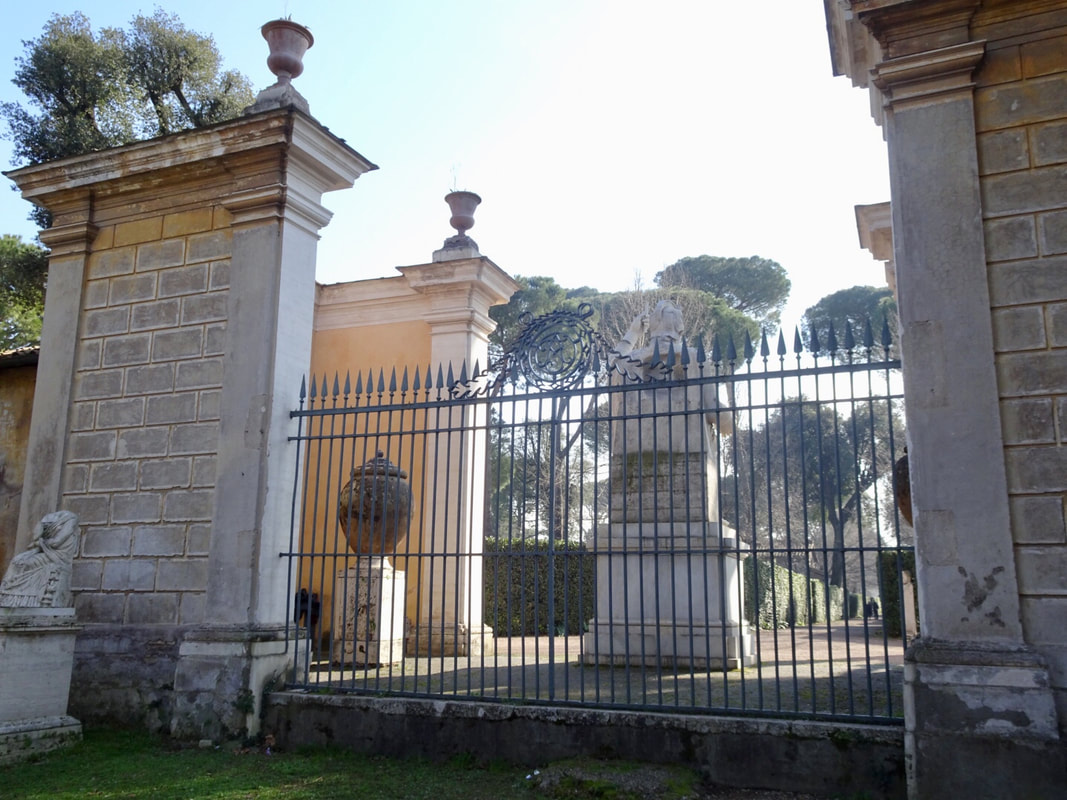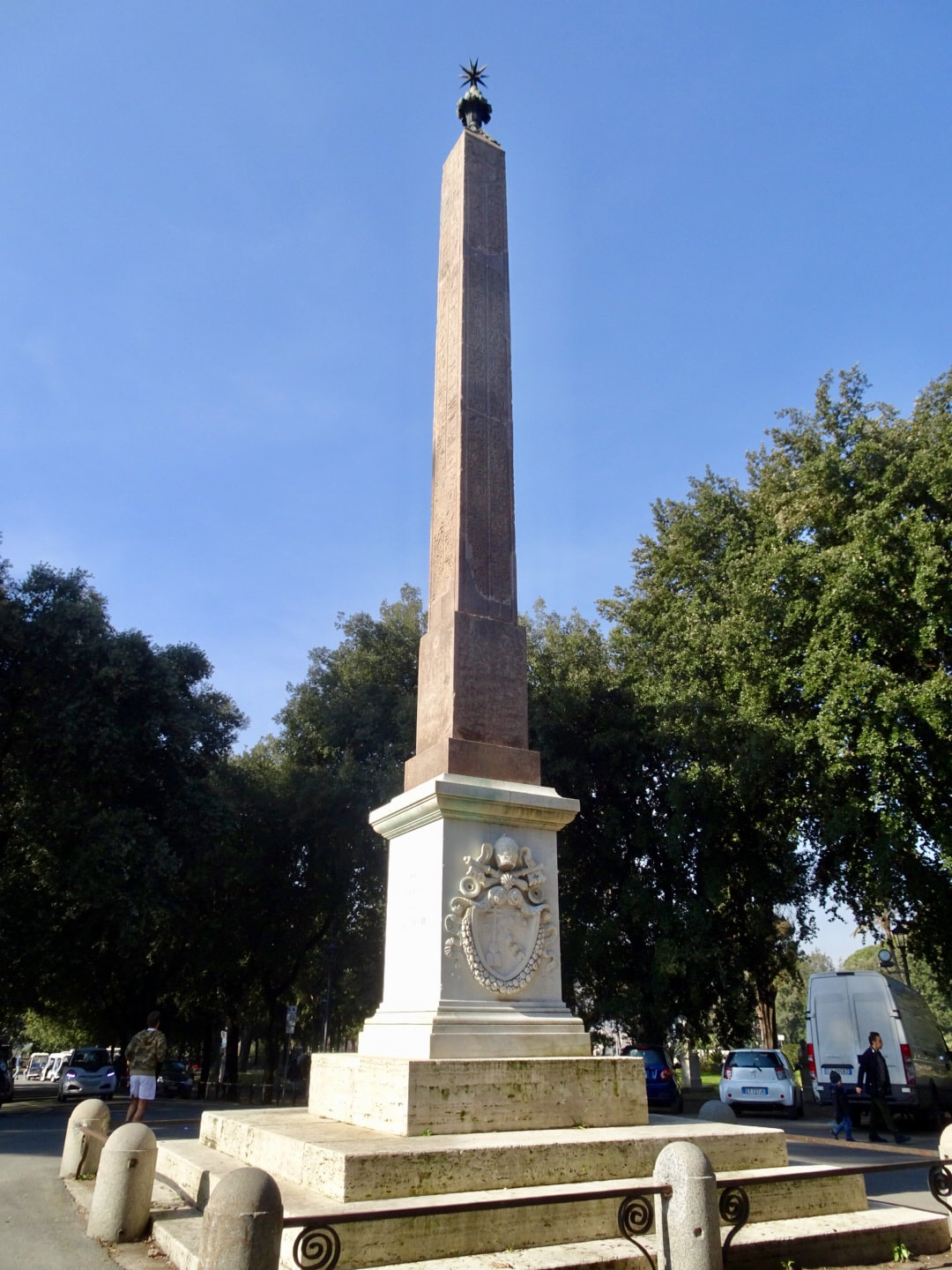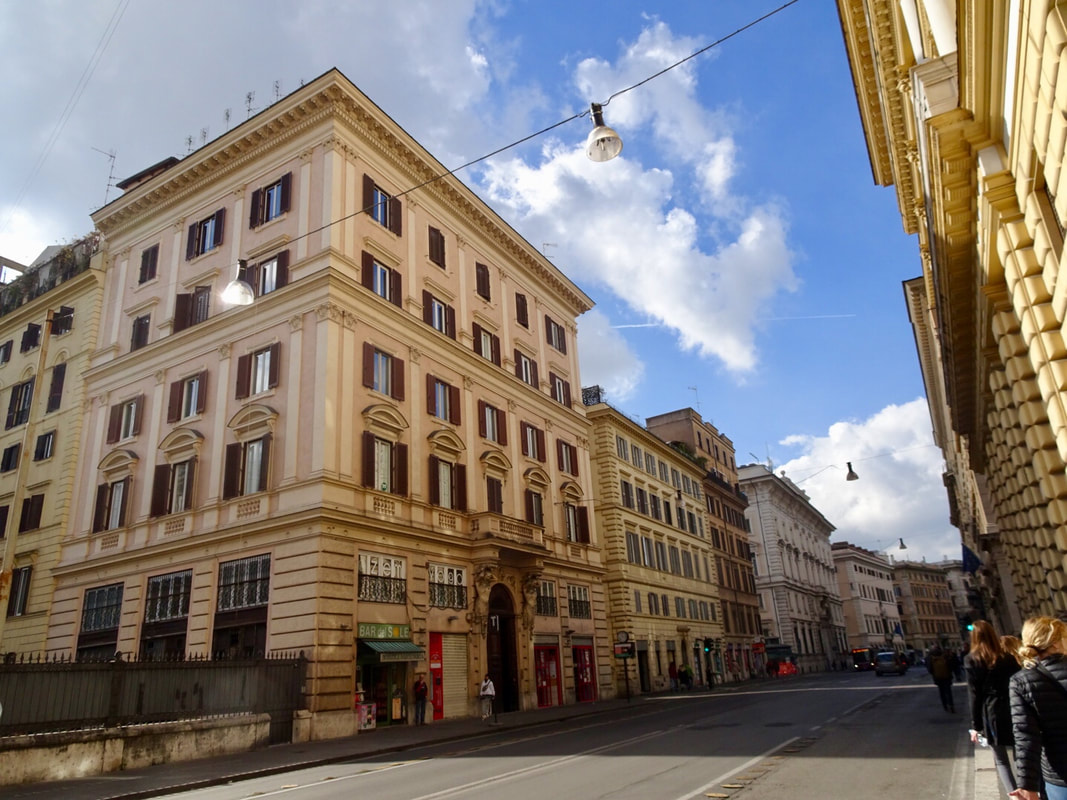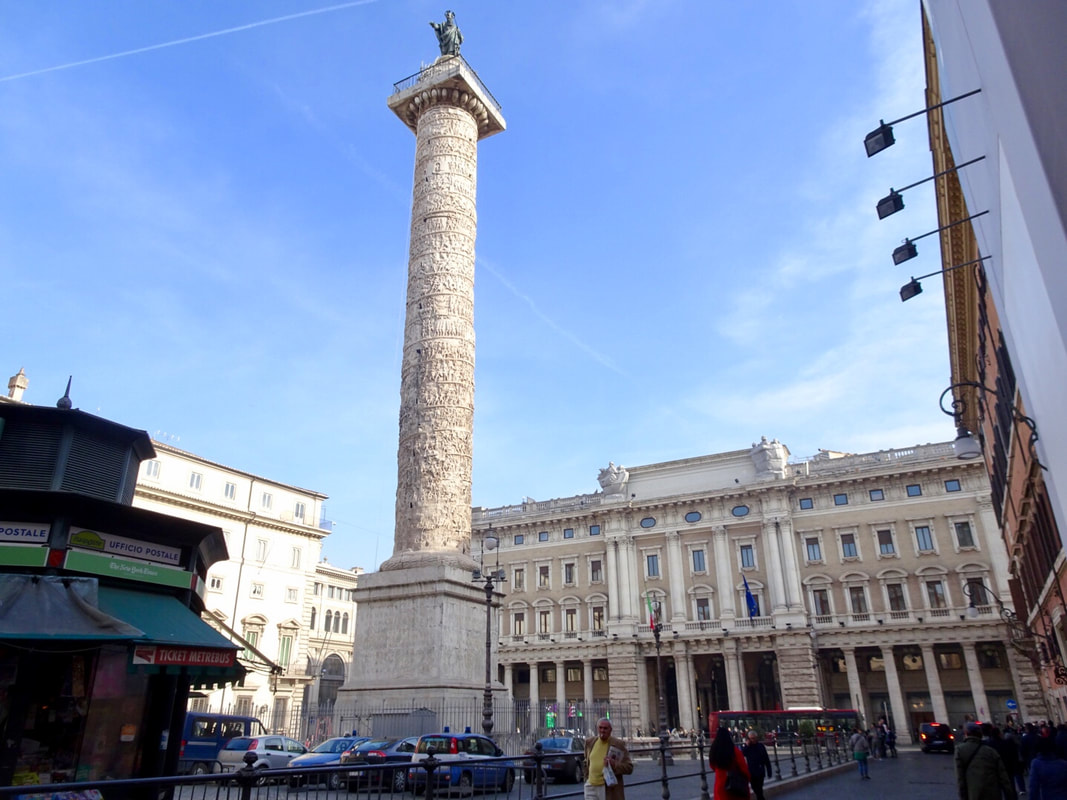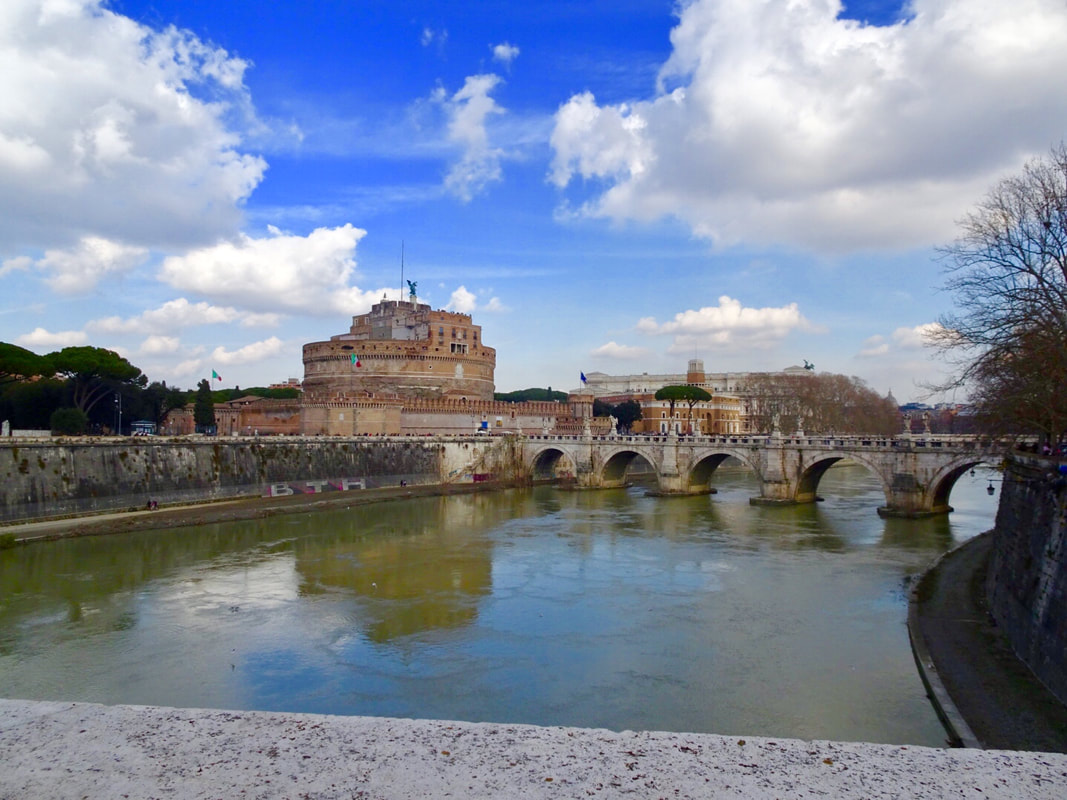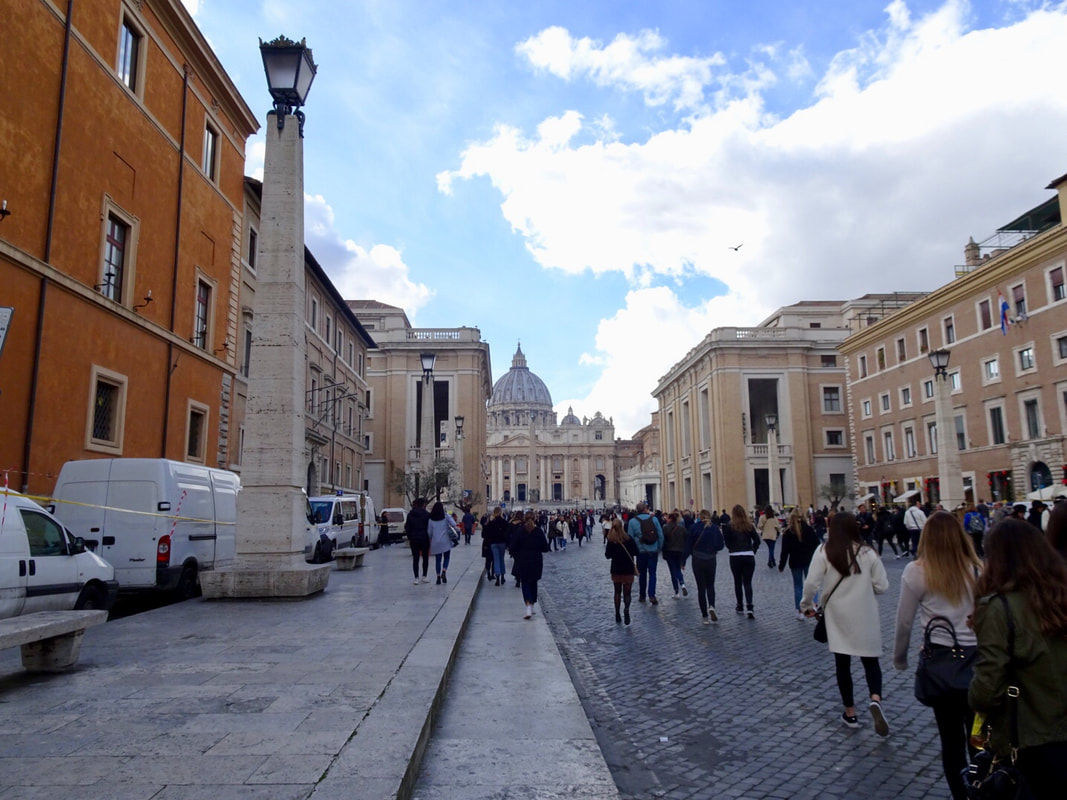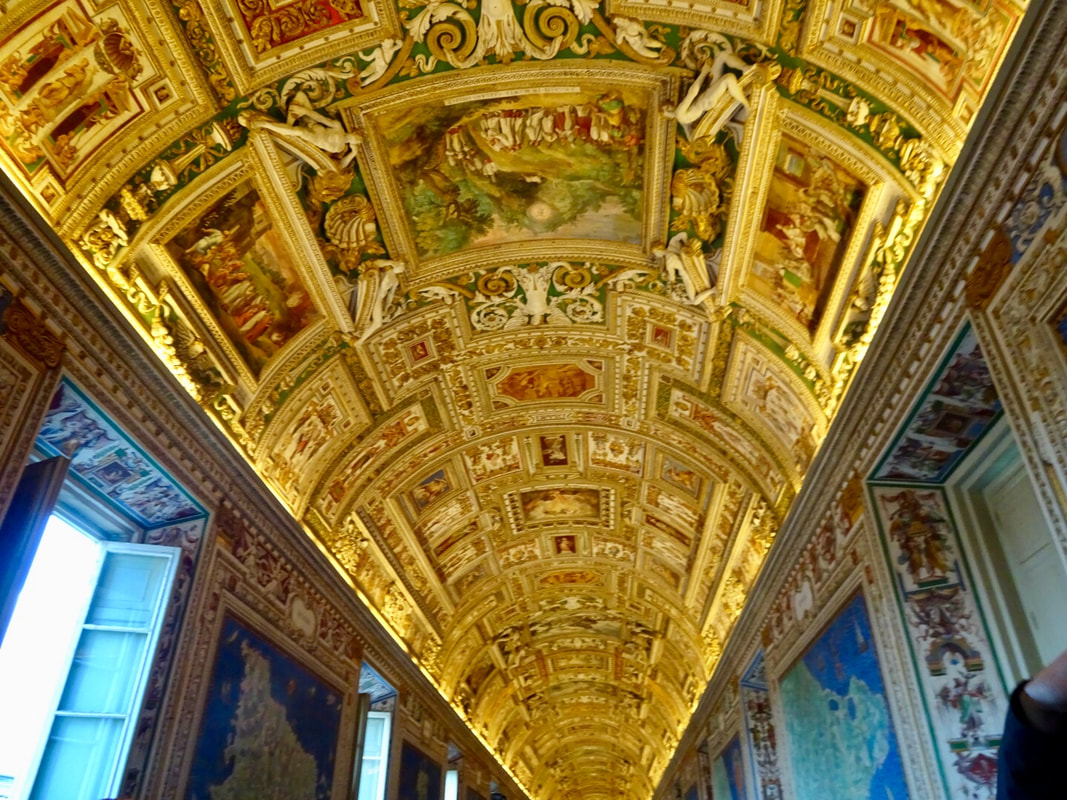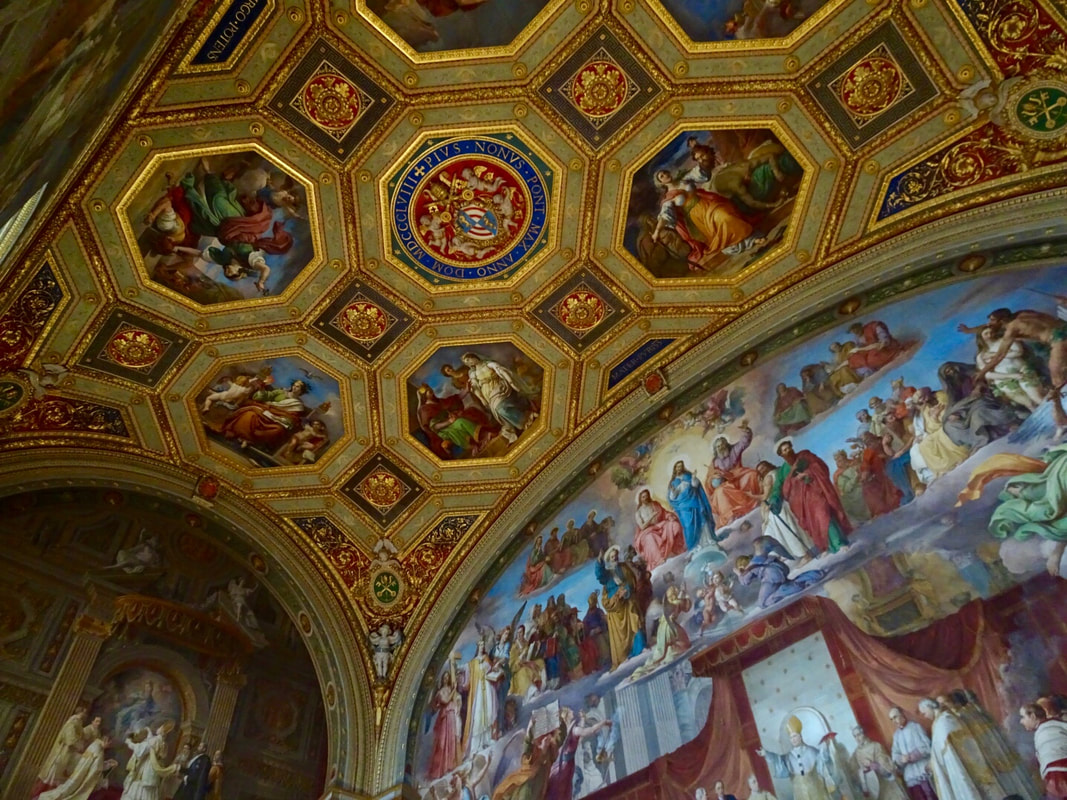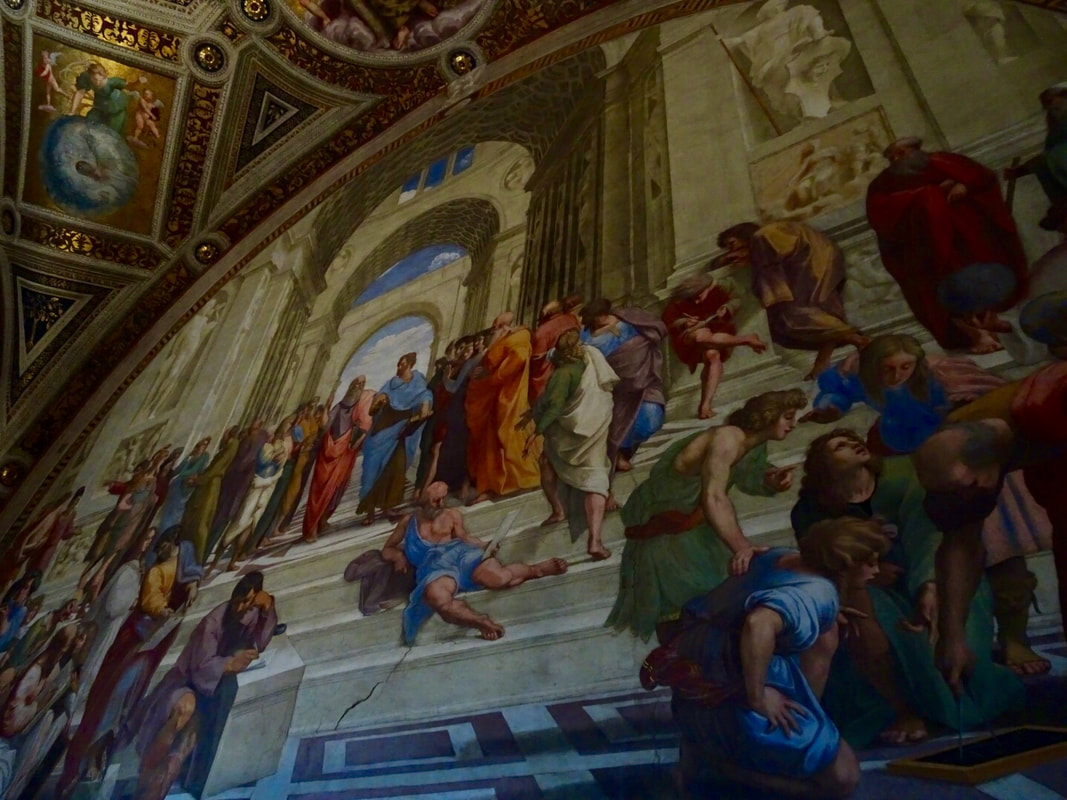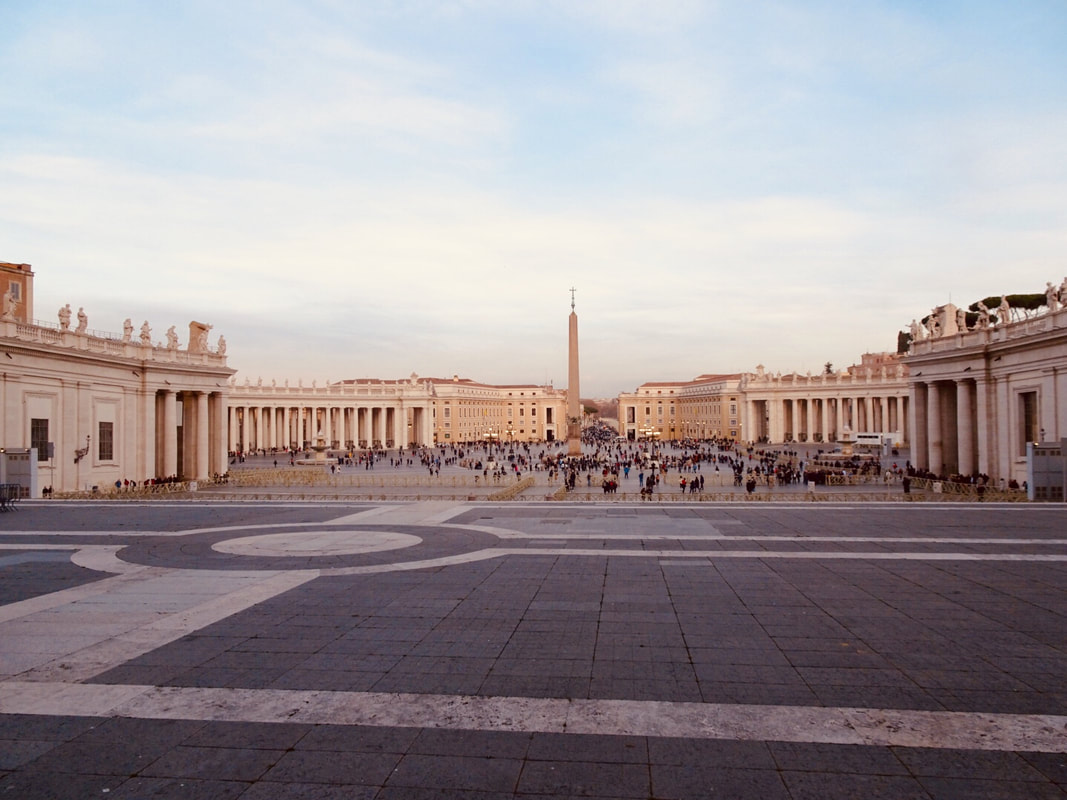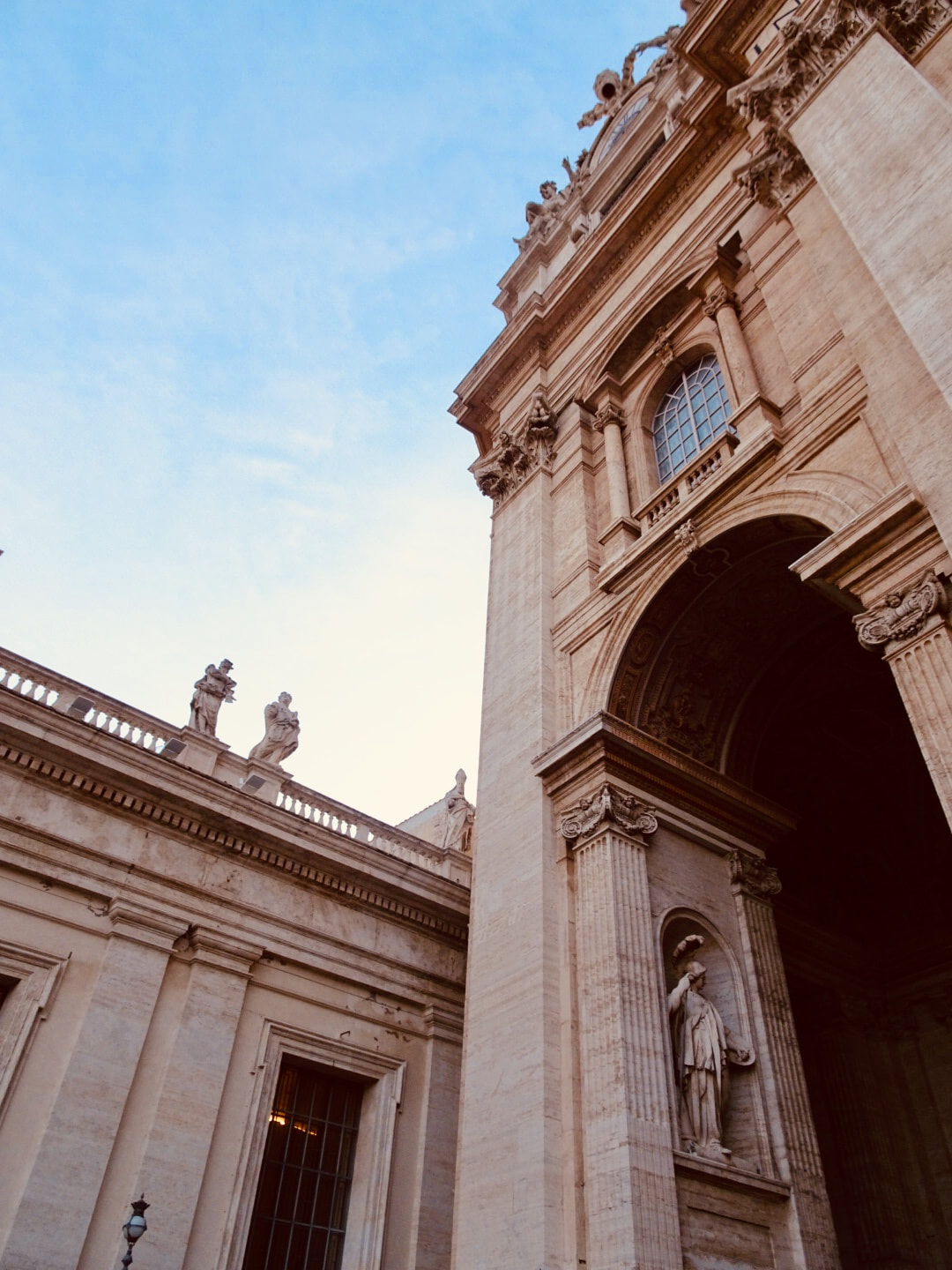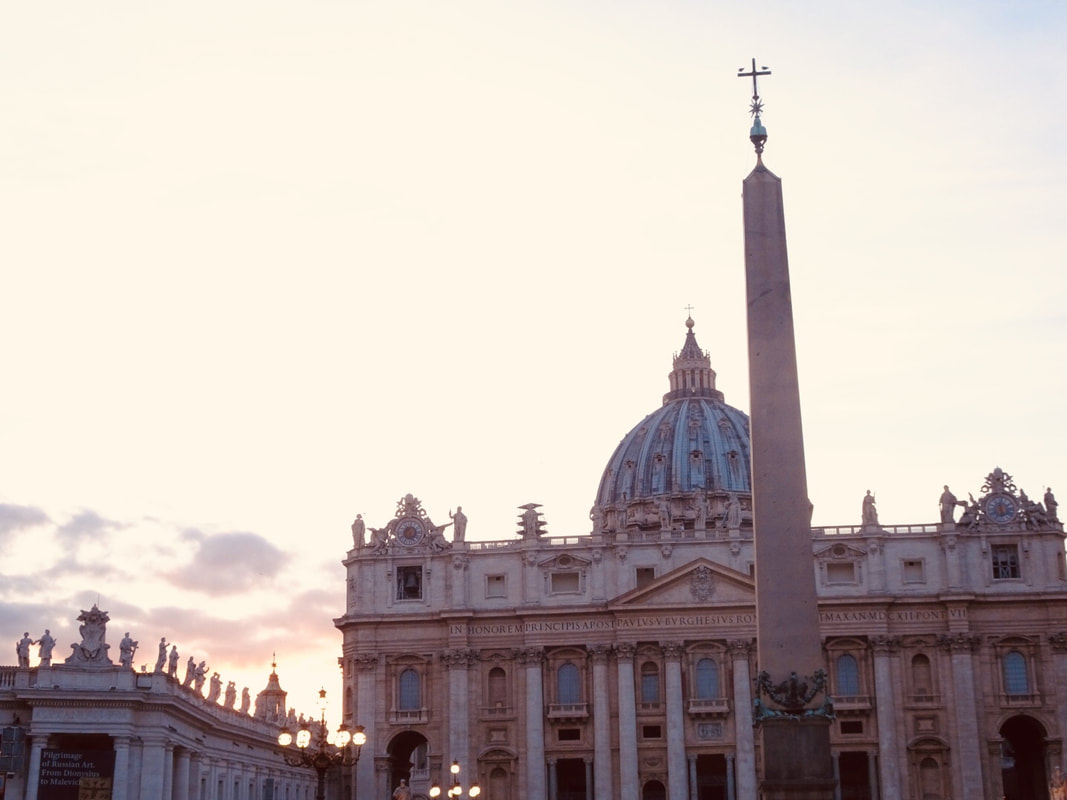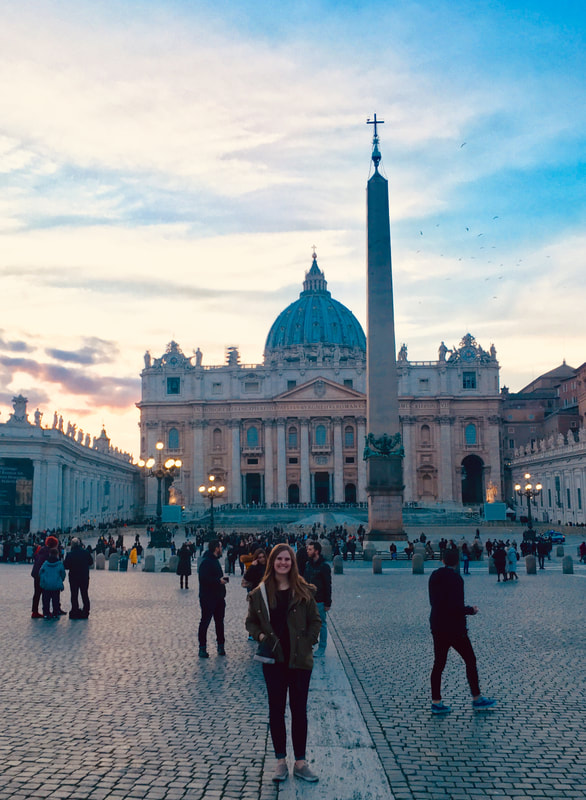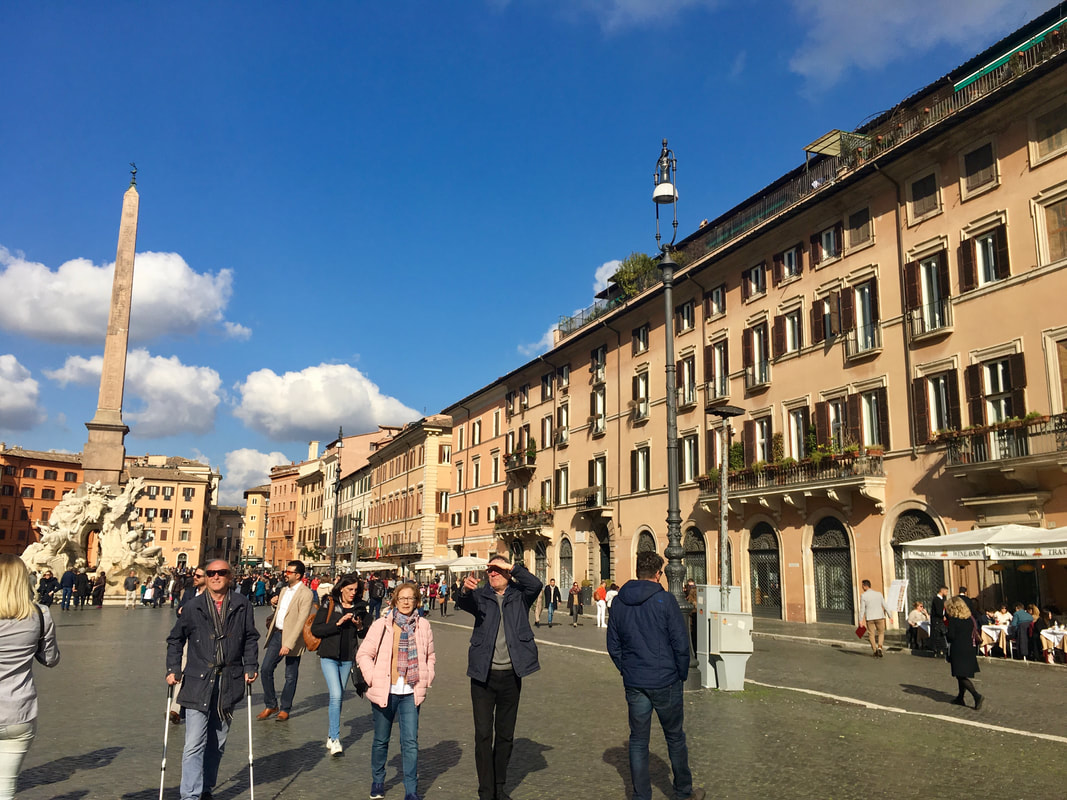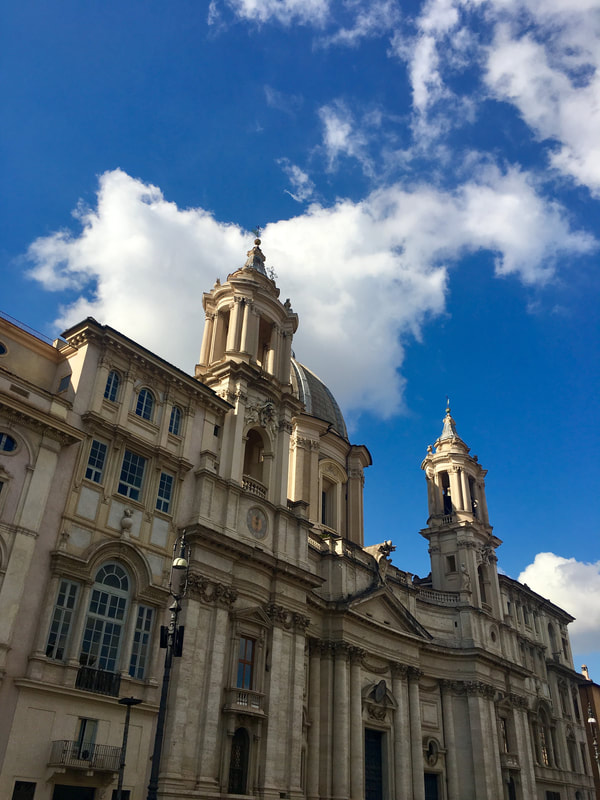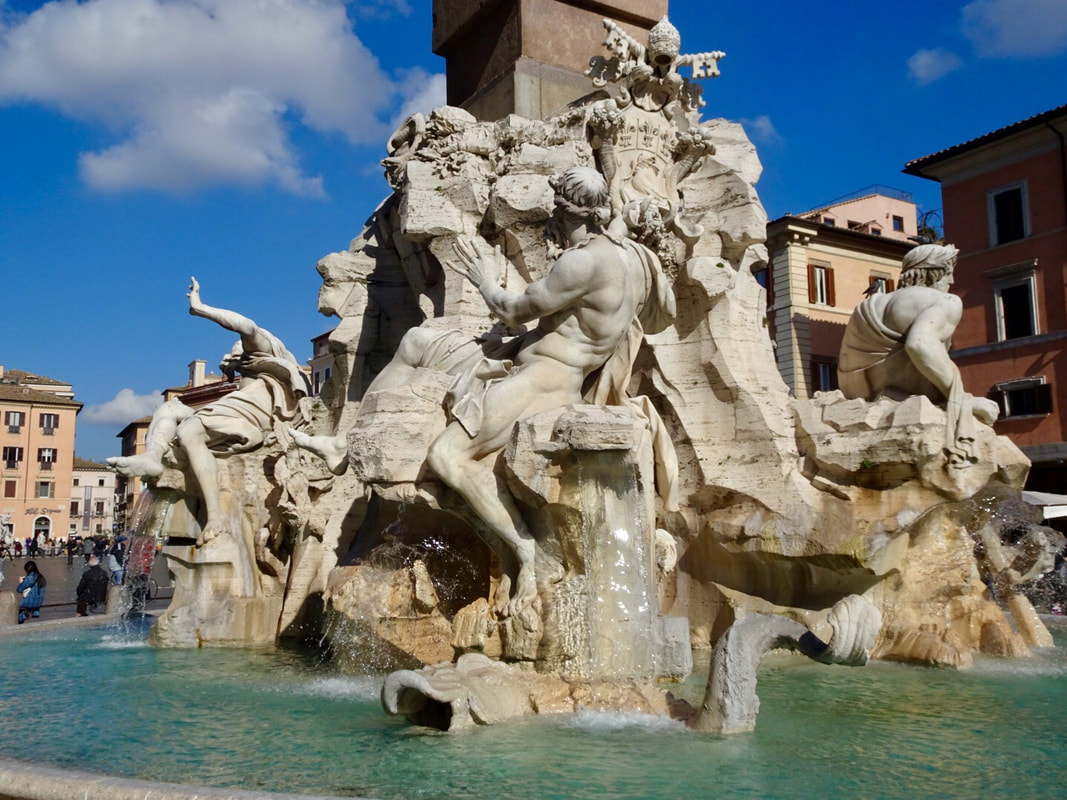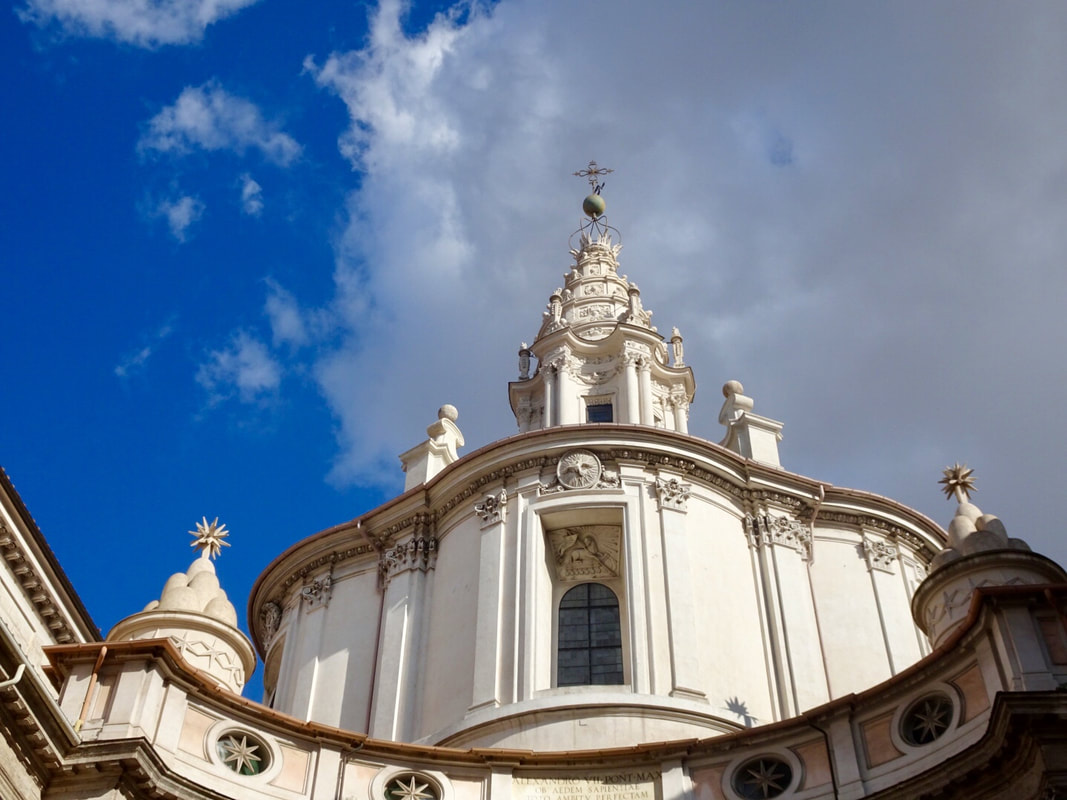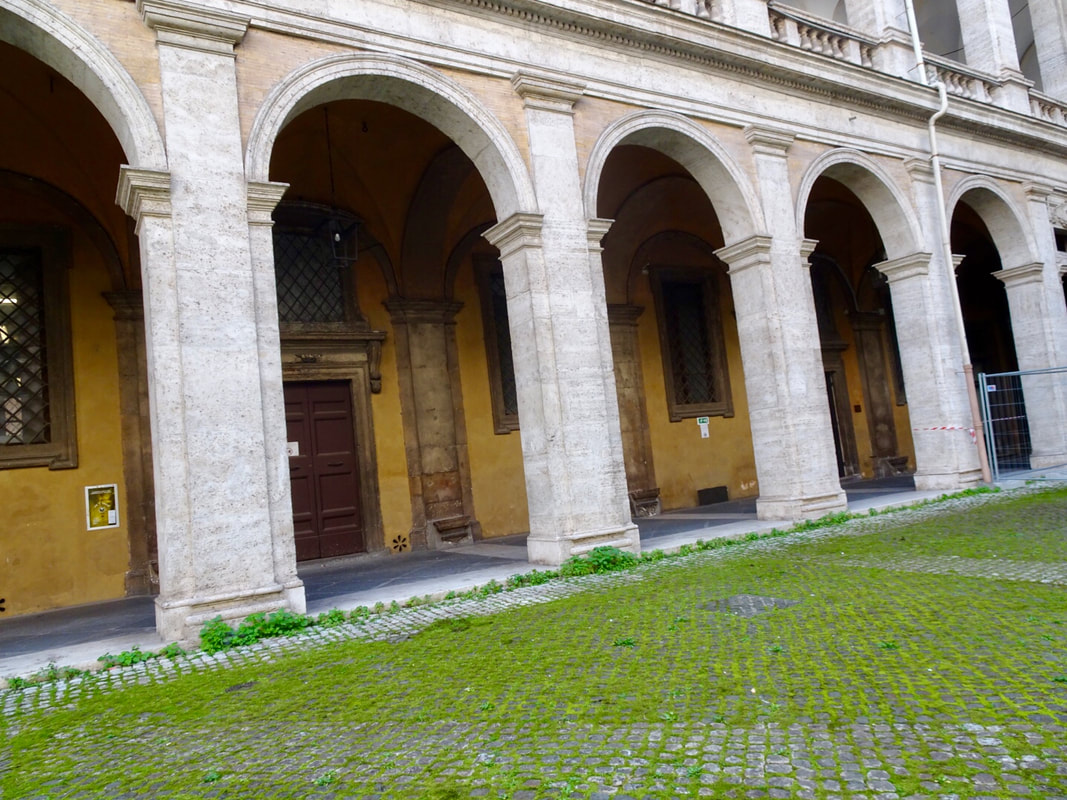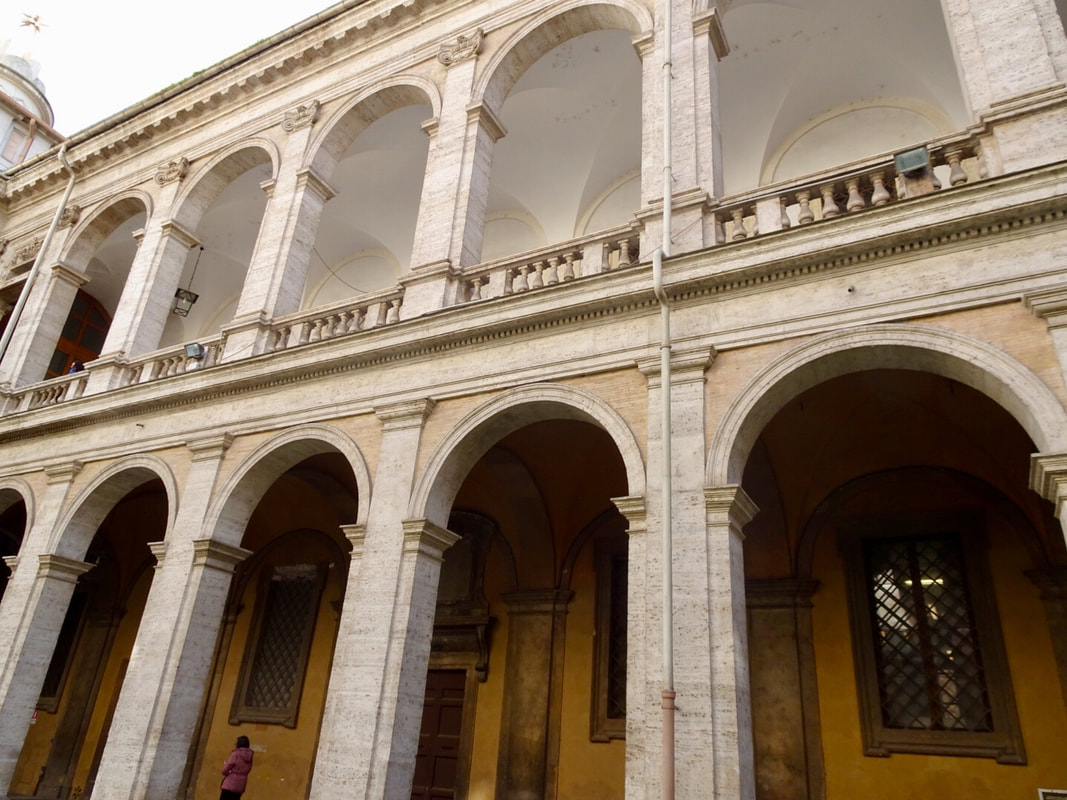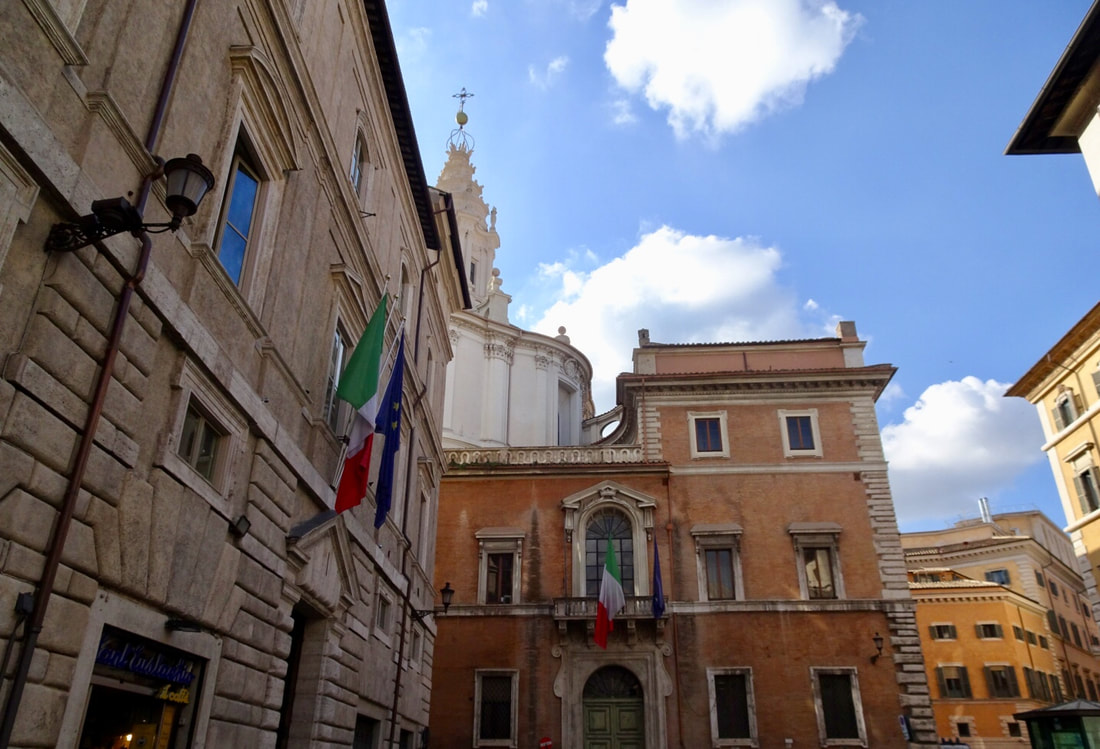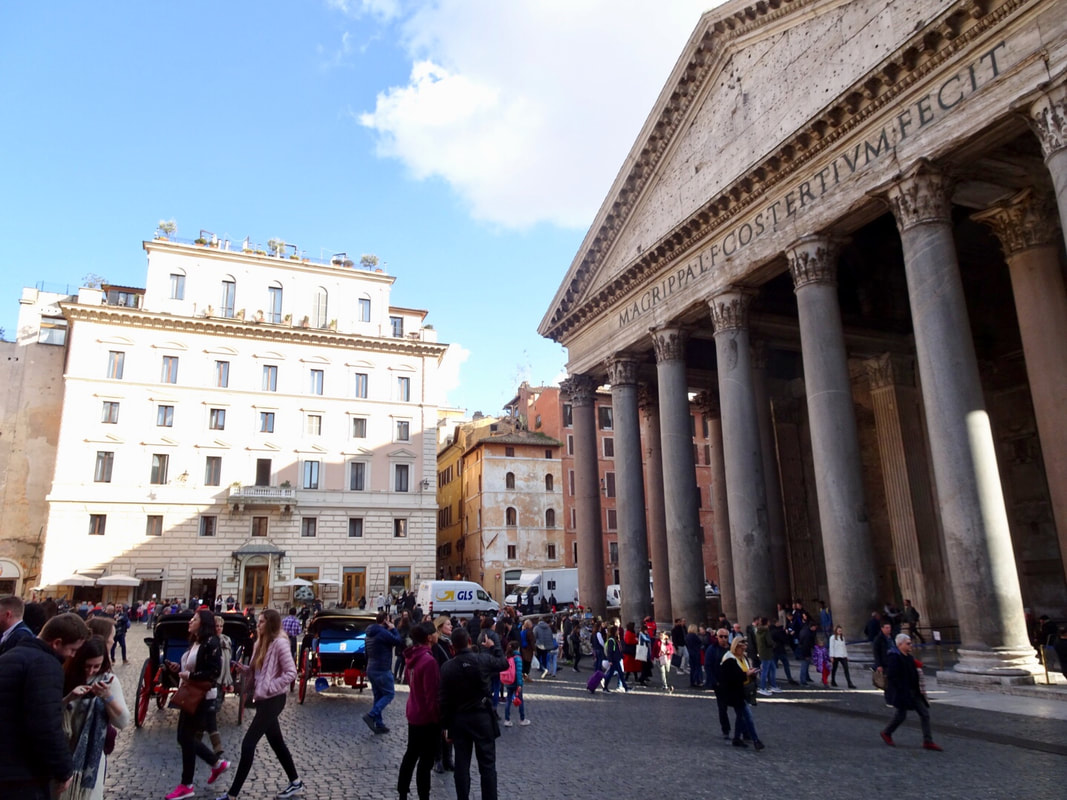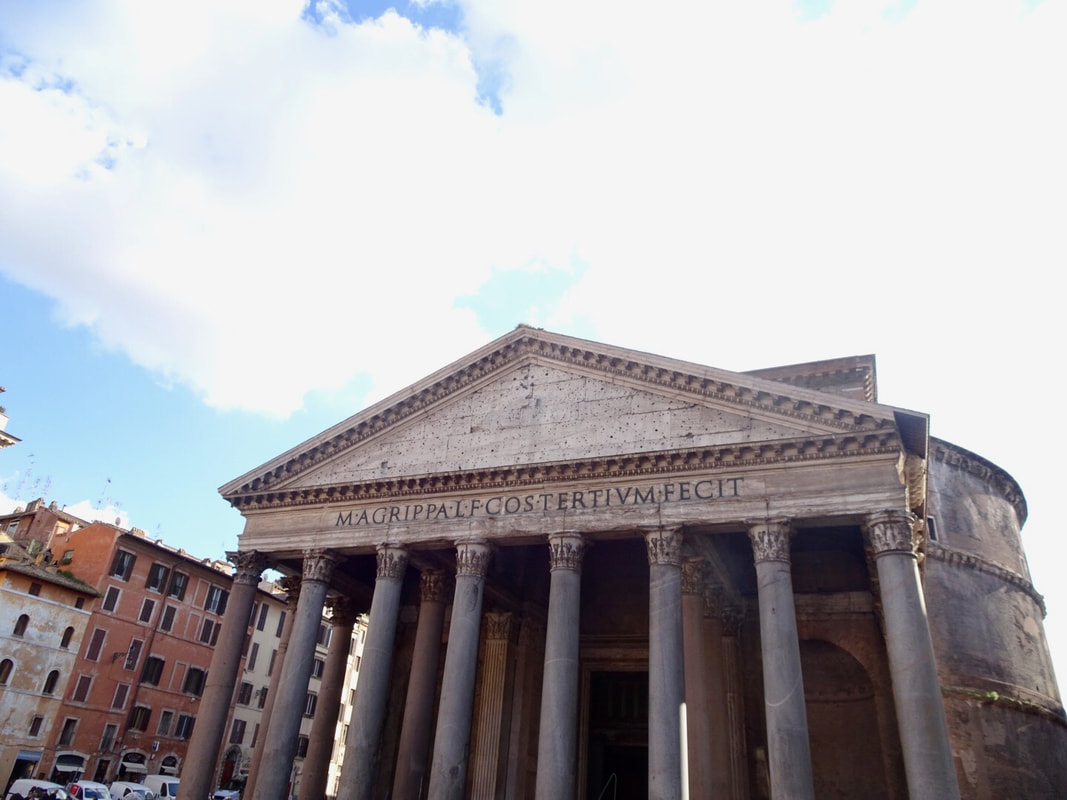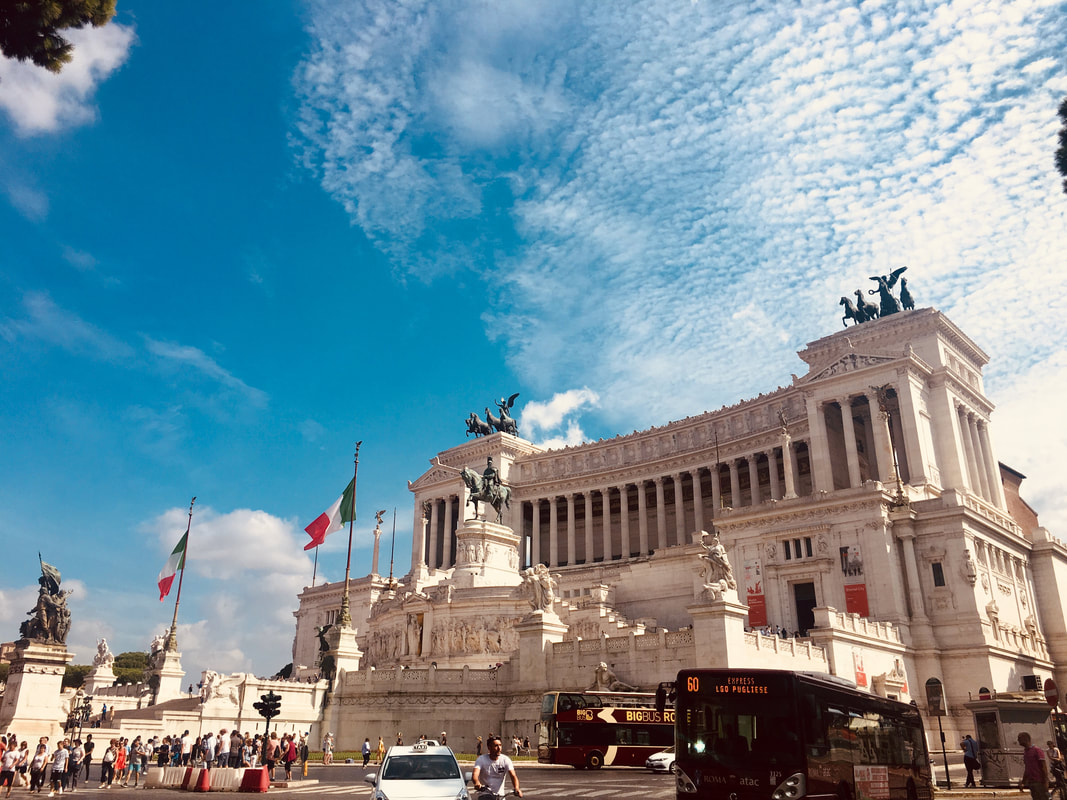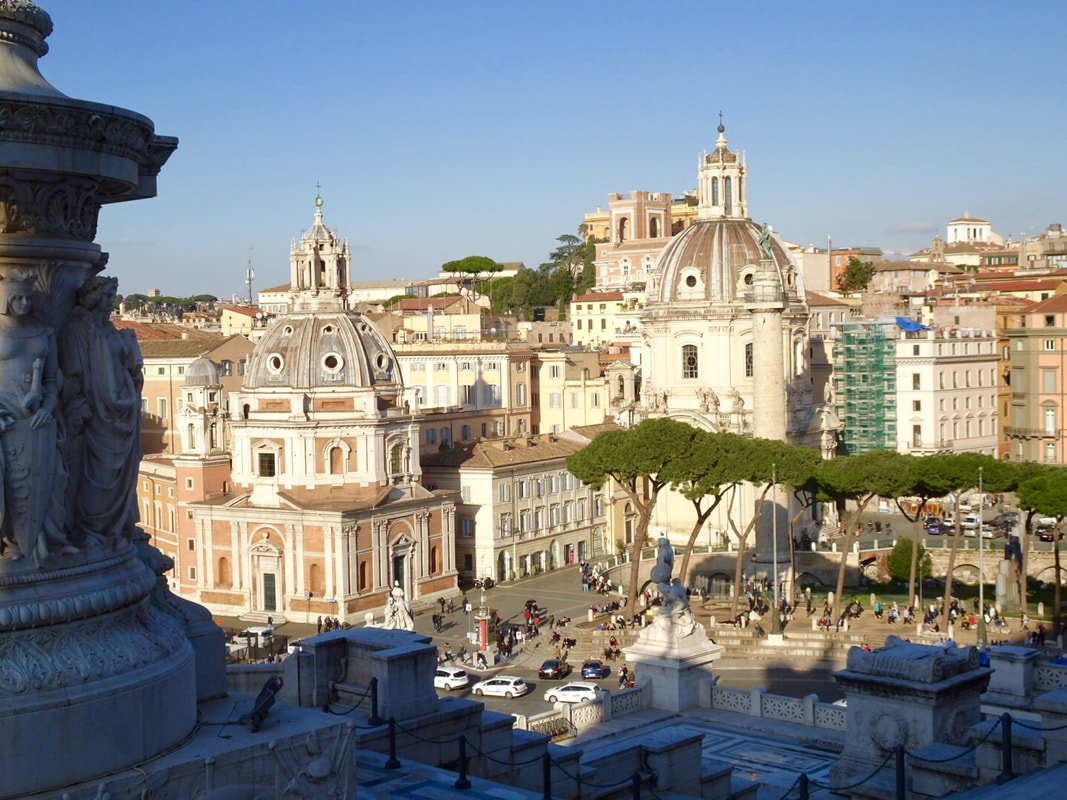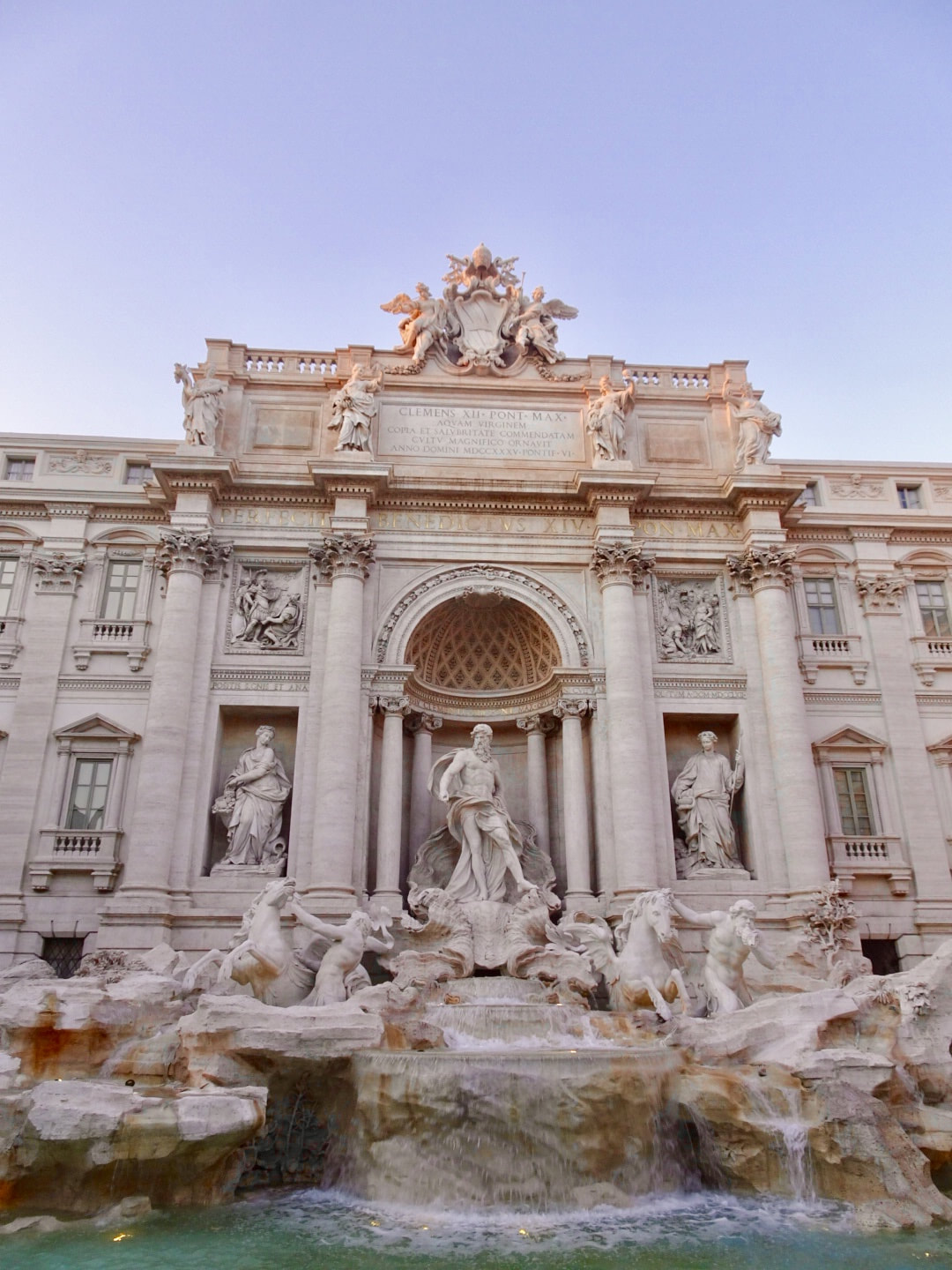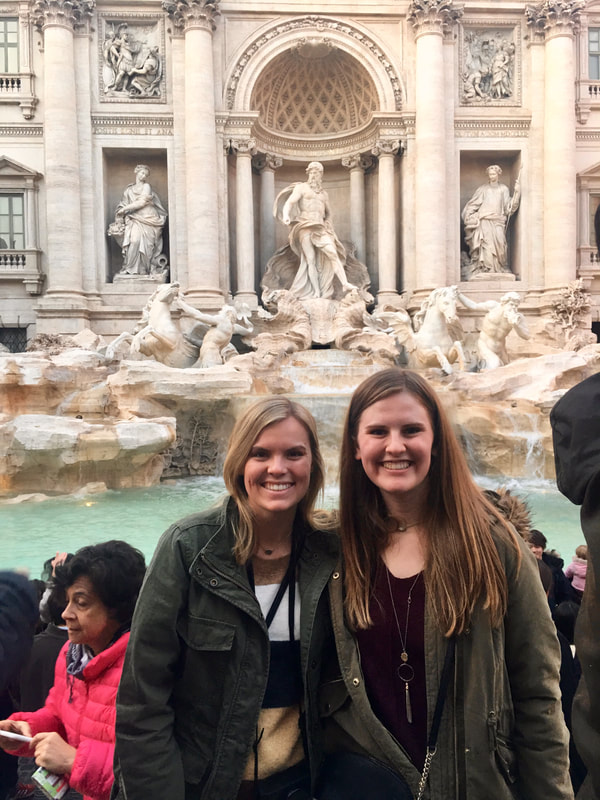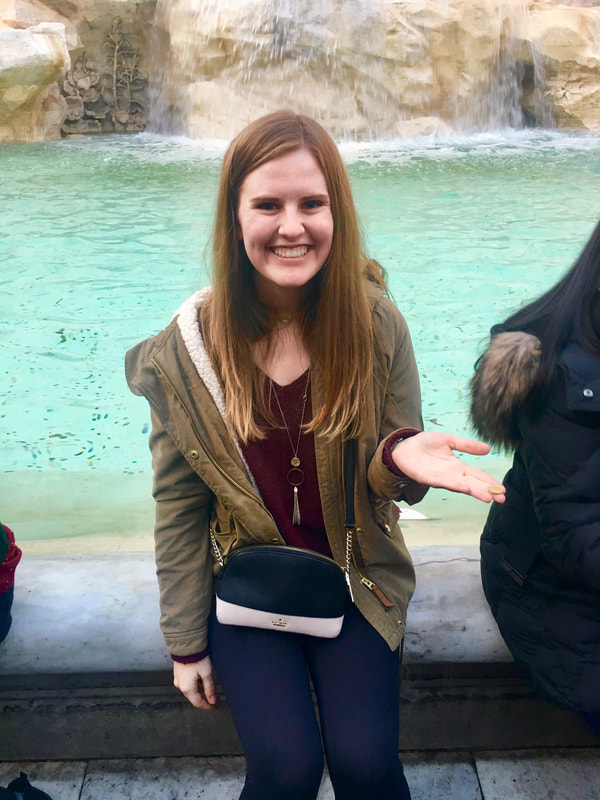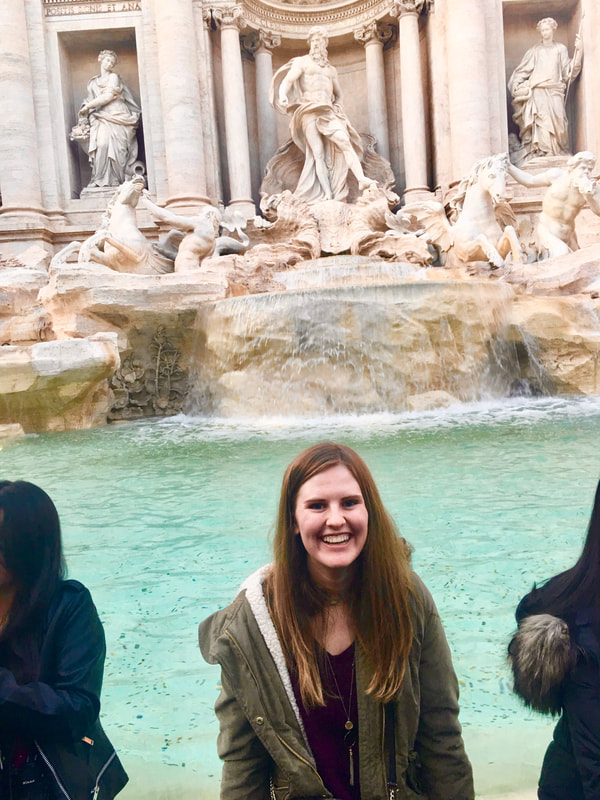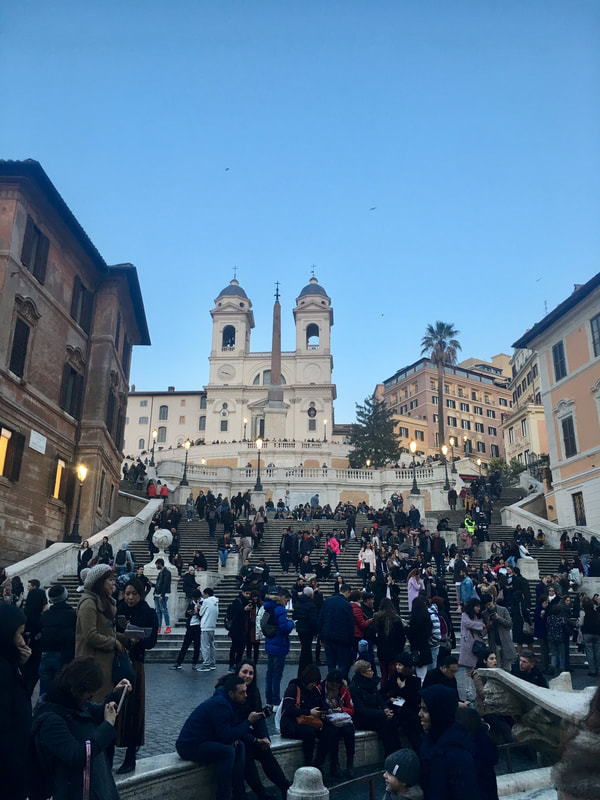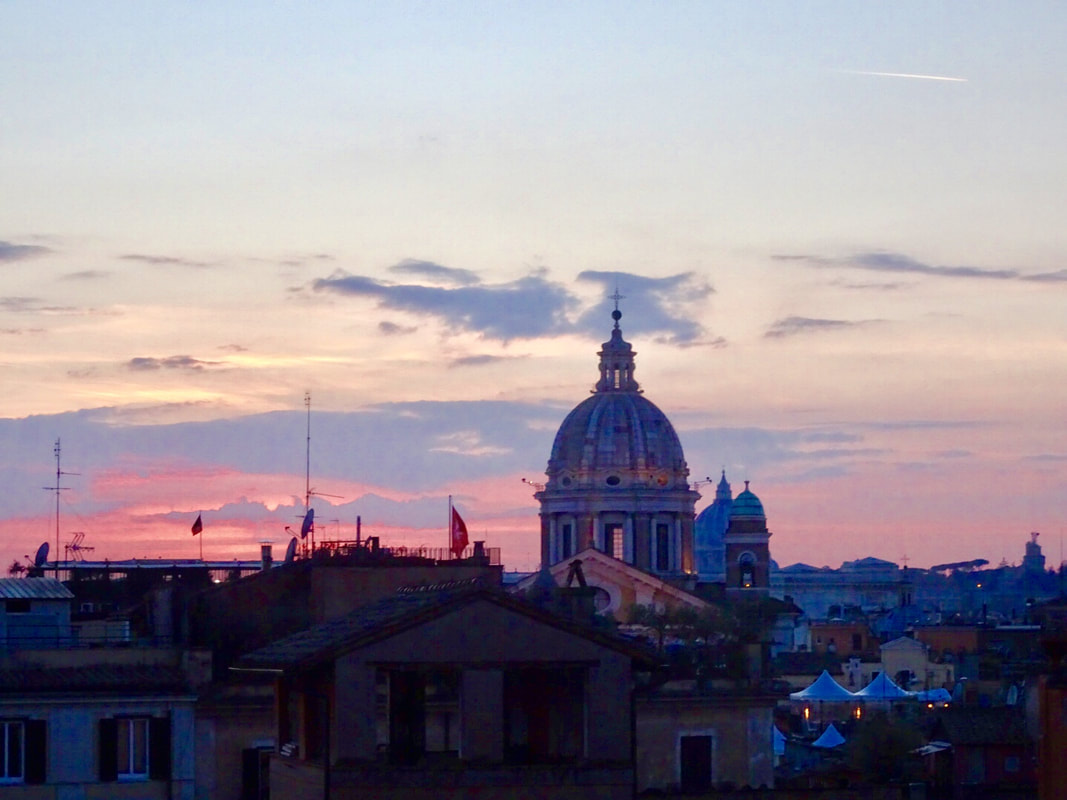|
When I returned to the United States for Christmas I was met with a million questions from friends and family about life abroad. What was your favorite place to visit? Can you speak Italian now? Did you love the gelato? What did you miss most about the U.S.? (Answers: London. No. Yes. Target.) The one question I didn’t expect from everyone was, “Did you see the leaning tower?” (the “of Pisa” is implied). Every time a friend or family member asked this, I just shrugged my shoulders and said I never had the time to get around to it. This always seemed like a flimsy excuse seeing that I took a ten-hour night bus to Copenhagen while Pisa is less than an hour away from Florence by train. I guess the real reason I never ventured out to Pisa was because it was too easy. Last semester I had this idea in my mind that every weekend I needed a true “adventure”- rickety bus rides through Spain, boat tours along the river Seine, Belgian Waffle cooking classes in Brussels. As Pisa was practically in my backyard, it didn’t seem as exciting or appealing. But as I mentioned in my last post, I came back to Florence this January determined to see as much of Italy as possible before my final departure in May. So a couple of weeks ago, I texted one of my friends “Hey! Want to go to Pisa tomorrow?” and in under an hour we’d booked our train tickets. After some research, we found that the charming Tuscan town Lucca is only a twenty-minute train ride from Pisa, so we tacked that onto our itinerary as well. The next day- Friday- we hopped on the 9 a.m. train and arrived in Pisa shortly before 10. Only a five-minute walk from the train station, we arrived at the tower to be greeted by a mass of tourists. Coming from Florence, I felt like I’d become immune to the annoyances of tourist attractions; but Pisa is on an entirely different level. Kiosks selling t-shirts, snow globes, and post cards crowded the streets, with places like “The Leaning Tower Café” and “Pisa Tower Gelato” lining the sidewalks. My friend and I spent nearly an hour taking pictures, attempting to recreate that iconic pose where you try to make it look like you’re holding up the tower. Examples: We wandered around the streets of Pisa for awhile to find that the city center itself is relatively small. The stores and restaurants immediately surrounded the leaning tower give way within a few blocks to residential apartments. After a couple of hours, we headed back to the train station for our twenty-minute ride to Lucca. After spending two hours in Pisa, Lucca came as a shock. The city is the opposite of a tourist attraction. Throughout our three hours in the town, we didn’t come across a single tourist kiosk, souvenir shop, or anyone else who spoke English. The utter lack of tourists became all the more surprising as we explored the town and discovered its charms. The ancient marble churches and buildings were breathtaking, and the sweet air constantly held traces of freshly warmed bread and pastries (there seemed to be a bakery on every street). We wandered the streets for hours, ducking into some local pasticerria and gelato shops every so often. My friend and I agreed that of all of our travels in Italy, Lucca felt as though it had the most authentic Italian feel. The day came to a close quickly, and we were back in Florence by 5 p.m. Looking back on this day, I marvel at what a truly remarkable position I’m in at the moment. Taking a spontaneous day trip to two beautiful Tuscan towns within the span of seven hours feels surreal . When in my life will I ever again be able to say “Oh I wasn’t really doing anything, so I went to Pisa for the morning”? It’s impossible to believe my last semester in Florence is already halfway over, and I'm going to try to take advantage of as many more of these magical moments as I can find.
2 Comments
Last semester, I participated in a common practice amongst American study abroad students known as “country hopping.” Basically, I left Italy frequently to explore places like Paris, London, Copenhagen, Madrid, Brussels, etc. Now I don’t regret any of my excursions- they all greatly shaped my perspective on solo travel throughout Europe- but at the end of the semester, I felt like I missed out on an opportunity to truly get to know Italy. Outside of Florence, I’d visited Rome, Verona, and the Amalfi Coast- all amazing places I highly recommend visiting- but all hopping tourist destinations. Coming into this semester, I knew I wanted to dive into the gritty areas of the country, the places you wouldn’t find on a Rick Steves “Best of Italy” special. So I asked my Italian professors, tour guides, and advisors about lesser-known destinations. Unfortunately, many of the places they offered are only possible to reach by car, and part of the paperwork I signed with TCU stated I would refrain from “renting cars, mopeds, or other motorized vehicles” while abroad. After narrowing down my list to places accessible by train, I decided my first foray into authentic Italy would be Perugia. The capital of Umbria, Perugia is a town situated on the top of a hill founded sometime before 300 BC. Halfway between Florence and Rome, a large percentage of its population is comprised of Italian college students attending the University of Perugia, giving the town a youthful atmosphere in the midst of its ancient architecture. From Florence, the train ride took a little over two hours. Once inside Perugia’s train station, I plugged the address of Piazza IV Novembre, the first stop on my list, into Google Maps. In an unexpected turn, the map showed that it would take over thirty minutes to walk to the city center. Walking was out of the question. In all my research about the city, I hadn’t considered any difficulties actually getting there. I considered taking a taxi, but a flat rate to the city was 10 euro each way, while a bus ticket was only 1.50 euro. I bought a bus ticket from a machine and went outside to wait on a bench. An Italian man around his mid 40s sat next to me, and after a few minutes of awkward silence he asked, “What bus are you waiting for?” (He said this in English. I guess my blonde hair and blue eyes don’t exactly scream Italian.) “What do you mean?” I asked. “Are you taking the A bus or the TS Bus?” “There’s more than one kind of bus?” The man laughed and explained that if I wanted to go to the city center, I needed to take the A bus. We chatted for a bit and he said that he was born and raised here in Perugia. However, he spent a year in college studying in the U.S. where he picked up English. “We do not get many Americans here,” he pointed out with a thick accent. Once inside the city center, I wandered the streets soaking in the town. The winding passages climbed and descended, sometimes at angles steeper than 90 degrees. The dark grey, white, and brown brick buildings hugged the narrow streets that felt tighter than those even in Florence (which I didn’t think was possible.) The more I explored the more I realized Perugia reminded of the medieval Tuscan village San Gimignano. It was if I had been transported back in time to the Dark Ages. Perhaps Perugia’s greatest surprise was the fact that absolutely no one spoke English. Every country I’ve visited in Europe has been dispersed with American tourists, and most workers in restaurants and stores have known basic phrases. In fact in Florence I feel at times like I’m surrounded by more Americans than foreigners. But in Perugia, a buzzing wave of Italian constantly spread through the crowds. Young children and students ran by yelling words I couldn’t understand, and I felt for the first time in five months that I was in a completely different culture. I had never before felt like such an outsider, an intruder. After grabbing a quick slice of pizza for lunch (“Margarita per favore.” “Ecco. Due euro.” “Grazie.”) I headed over to the Galleria Nazionale dell'Umbria- the largest collection of artwork in the region. The museum was completely empty aside from myself and two attendants (a couple of elderly Italian women whose high pitched chatter echoed off the vaulted ceilings). The majority of the pieces were Madonnas con Bambini, images I’d become accustomed to over my time Italy. Still, the vibrant colors and impeccable preservation of the pieces from the early 12th and 13th Centuries were mesmerizing, and I stayed in the tiny “museo” for over an hour. Following the museum visit, I continued to wander aimlessly through the streets. With no exact destination in mind, I ended up at a viewing platform overlooking the Umbrian countryside. Rolling green hills spotted with the occasional brown or golden villa spread across for miles. Snow-tipped mountains extended across as far as I could see, with the distinct lines of grape plants striping the expansive fields. After trying my best to photograph the charming views, I realized it was about time to head back to the train station. There was only one problem- I had no idea how to get there. I went to a drug store to buy a bus ticket, and asked the woman behind the counter how to get to the Perugia Railway Station. “Come faccio ad arrivare alla stazione ferroviaria?” I clumsily read off Google Translate. The woman shot back in rapid Italian, and I stood dumb. “English?” “No.” “Ok. Grazie.” I went to another drug store a little ways down the street and had more or less the same conversation. However, the small, balding man in the shop said “Mini Metro.” I vaguely recalled reading something about the tram that connects the train station to the city center from my research about Perugia the night before my trip. Hoping to fall upon some good luck, I plugged the phrase “Mini Metro” into Google Maps. It located a spot twenty minutes away, and sighing in relief I picked up my pace and followed the map’s blue path. After ten minutes, I was out of the center and utterly alone. The charming, medieval brick buildings had given way to abandoned modern concrete complexes covered in graffiti with smashed in windows. My heart rate quickened and my mind panicked, imagining horrific scenarios. What if someone jumps out and attacks me? What if I come across a gang and they kidnap me? What if I have to fend off an attacker and then a policeman arrests me for violence and I end up the next Amanda Knox, trapped in an Italian prison cell for years on end? Things didn’t get better from there. Once I arrived at the map’s indicated location, my panic skyrocketed when I realized Google had taken me to an abandoned bus station in the middle of nowhere. To make matters worse, my train was going to leave in twenty minutes- with or without me on it. To quote Jennifer Lawrence the night she fell on her way up to receive an Oscar: “What went through my mind...? A bad word that I can't say that starts with F." Suddenly, I spotted a girl about my age rolling a suitcase down the street. “If she has a suitcase, she’s got to be going somewhere, right?” I thought. So I followed her. My blind faith proved worthwhile as the girl ended up leading me to a bus station. There, I went inside a small kiosk and asked an attendant about means to get to the train station. Again, he rambled on in Italian and pointed across the street, in the opposite direction of the buses. Boiling with frustration I left the building, checking my phone for the time. Ten minutes until the train left. At that moment I decided to just run to the station. It would involve skirting along the edges of a highway with manic Italian drivers and no sidewalk, but what other choice did I have? As I headed off in that direction, a white taxi sped around the corner like a knight in shining armor. I frantically waved my arms, and the cab pulled over. “Train station!” I almost yelled in the driver’s ear. Exactly four minutes later, we pulled up at the station and I sprinted to the platform, barely making it onto the train before the doors closed shut behind me. So I guess the moral of the story is: just take a taxi. It’s more expensive, but if you’re going to a small town with a confusing public transportation system, it’s better to fork over a little extra cash than to miss a train.
Although my day trip didn’t go exactly as planned, I loved my time in Perugia. The town is exactly what you think of when you imagine an authentic Italian village on a hilltop. And if you ever have time for a spontaneous day trip, I highly recommend adding Perugia to your list. But if you do, maybe try a bit more research beforehand. And just to reiterate: always take a taxi. This semester I’m enrolled in a course called Shakespeare’s Italy. I’ve never properly studied Shakespeare, and I felt as an English major I couldn’t possibly continue any further in my literary education without reading his greatest works. After only two classes, I’m pretty excited for the course. Throughout this semester, we’ll focus on five of Shakespeare’s plays set in Italy including The Merchant of Venice, The Taming of the Shrew, Othello, Romeo and Juliet, and Julius Caesar. Our first assignment given last Wednesday was to read the entirety of Julius Caesar. The timing couldn’t have been more perfect as two days later I left for the play's very setting- Rome. The first two days of the trip, it was pretty difficult trying to imagine the city as it was during the days of Caesar’s rule. I could hardly picture Brutus and Cassius walking down the street as they plotted Caesar’s death whilst surrounded by honking cars, flocks of flashy tourists, and giant movie billboards. Then this morning I went to the Roman Forum with a tour group, and it was as if a light switch flicked on. This was the Caesar’s Rome. The Roman Forum sits about twenty feet lower than street level due to the fact that it was mainly underground for thousands of years. Due to the annual flooding of the Tiber River, Ancient Rome was covered in about a foot of sand and debris every year, burying much of its history in the process. In the 1800s, the area was finally excavated, and now more than 2.5 million tourists visit the site each year. Historians and archeologists have expertly placed the fragments of columns and buildings in the approximate locations based on ancient accounts. Throughout my tour, our guide pointed out the remains of law offices, government buildings, Pagan chapels, and even a dentist office (excavators found piles of teeth in a drain on the spot and concluded this was an early form of dentistry.) Due to detailed accounts in poems by Plutarch, a Greek-Roman writer who lived from 45 AD to 127 AD, we can pinpoint exact locations of Ancient Rome. In fact, Shakespeare relied heavily on Plutarch’s poems while writing Julius Caesar. During my tour, the guide pointed out the platform Mark Antony delivered his famous “Friends, Romans, Countrymen,” speech, the final resting spot of Caesar himself, and the Senate building where Caesar was voted posthumously to become a god. Another highlight of the Forum includes Caesar’s Palace (not the one in Las Vegas). Climbing to the top of the Palatine Hill left us a little winded, but it offered spectacular views. Following the tour of the Roman Forum, we were left free to explore the famed Colosseum by ourselves. Originally known as the Flavian Amphitheater, the Colosseum was built in the first century AD. Strolling through the building, I was struck by the its sheer history and significance. Before the TCU students finally departed Rome to head back to Florence, we split off into groups to find a place for lunch. Wandering the streets with five of my friends, we poked our heads into a few places before finally settling on a cute trattoria (an Italian restaurant that’s a bit cheaper and has a more extensive menu than an osteria.) After scarfing down some artichoke pasta (artichokes are a popular ingredient in Rome- I recommend their fried artichoke hearts), we paid the waiter and left. As we were headed to the door, I was stunned to see an actress from the 2000s teen drama Gossip Girl. Once outside, my friends and I couldn’t contain our excitement from seeing “Blair’s mom” as we called her.
This funny encounter was the perfect way to end a surprising and exciting weekend in Rome. Italy brings many thoughts to mind: pasta, wine, art, coffee, the Renaissance, Leonardo da Vinci. And as a people, Italians have also garnered a number of titles over the centuries: passionate, noisy, expressive. But of all the brilliant words and phrases that characterize Italian culture, the one I perhaps enjoy the most is “easy going.” As a whole, the pace of life is a bit slower in this small country in the Mediterranean. Prominent 18th Century authors such as Goethe and Lord Byron famously popularized the terms “happy-go-lucky”, “carefree”, and “nonchalant” as ways to describe the general Italian way of life. I’m happy to say that overall, this laid back atmosphere still remains in the majority of Italian cities today (from what I’ve seen), and Rome is no exception. Mornings in the Eternal City are packed with chatty tourists, honking cars, and locals gliding through the masses on bikes and motorcycles; but the air lacks the usual tension filled sense of urgency and stress normally found in large cities like New York or London. Everyone appears relaxed, at ease, and content in their current surroundings, not in any rush to make it to the next place. This morning, our first in Rome, I left to explore the city at the crack of dawn. My friend Caroline accompanied me, and we wandered the ancient streets just as the sun began to peak over the rooftops. Our first stop was La Casa Dell Caffe, a famous coffee bar located right off of the Piazza della Rotunda (the square with the Pantheon). Multiple tour guides recommended the spot, claiming it has some of the best espresso in Rome. I ordered a cappuccino (1.30 euro) which I greatly enjoyed, but can’t say is the best I’ve tasted. That title still belongs to one of my favorite spots in Florence that I’ll reserve for discussing in another post. From the coffee bar we found our way to the Spanish Steps. We visited the steps yesterday, but this time were instead interested in what lay on the hill behind the steps: Villa Borghese. One of the largest parks in Rome, the centuries old stretch of land offers breathtaking views of the city’s skyline. The eclectic buildings shape the outline punctuated by cathedral spires, basilica domes, and terracotta rooftops. The park itself is filled with ruins including old busts, Egyptian Obelisks, and abandoned graves. As we wandered deeper into the park we came across a carousel, go carts, and an outdoor garden restaurant. A great place for families, the area was full of children running around and locals walking their dogs. After our brief exploration of Villa Borghese, we met up with the rest of the TCU students at our hotel to walk to the Vatican. Although the 45-minute walk didn’t do any favors for my sore feet, it exposed us to charming new streets and landmarks that couldn’t help but bring a smile to my face. At times I had to stop my train of thought to remind myself I was really in Rome- one of the most famous, historically significant cities in the world- and I shouldn’t take a second of my experience for granted. Once we reached the Vatican, the students split into three small groups, and we each went off with a tour guide. The guide led us through the grand passageways, telling stories about the history of the frescoes and sculptures we passed along the way. Once we arrived at the Sistine Chapel, our tour guide left us and we were allowed as much time as we needed to gaze upon Michelangelo’s masterpiece. Truly one of the most phenomenal pieces of art I’ve ever seen, I struggle to put into words the glorious beauty and immense span of the scene. Once inside, I found a spot on a bench along the side of the room, and I tried my best to soak in my surroundings. For most of my time I craned my neck to stare at the ceiling. Depicting scenes from the Bible including the formation of the universe to the creation of man to the banishment of Adam and Eve from the Garden of Eden, the characters on the ceiling are incredibly life-like, almost as if appearing in 3-D. I could hardly imagine Michelangelo's grueling process of painting these elaborately detailed characters while lying on his back, suspended 21 meters in the air. After a brief look inside St. Peter’s Basilica, I stepped out into the courtyard facing the Vatican. The beautiful marble columns and statues trace the space in a U form, and I couldn’t help myself but to take a million pictures. Almost as if perfectly planned, the sun began to set behind the basilica’s dome, illuminating the sky with a kaleidoscope of color. And with this, my second day in Rome came to a close.
Every semester, TCU sends their students studying in Florence on a three-day excursion to the Eternal City. The trip includes walking tours, a visit to the Vatican, and a trek through the Roman Forum. As this is my second time through the program, I’ve participated in the trip before and I was told the excursion was optional in my case. So I considered skipping the weekend to instead remain in Florence or perhaps visit small Tuscan towns I’ve yet to discover. However, after some thought I realized my three days in Rome last September simply weren’t enough. The city is rich in history and culture, with an enchanting surprise around every corner. With a population more than seven times that of Florence, I realized it would be incredibly foolish to pass up an opportunity to miss one of the most visited cities on earth (more than 20 million tourists a year). So at 9 a.m. this morning I hopped on a train with 46 of my fellow TCU students, and we left Florence for the first time in two weeks. The train to Rome took a little under ninety minutes, and the trip offered breathtaking views of the Tuscan countryside. After arriving, we walked through the winding streets to our hotel, a rustic place next to the Piazza Navona. This piazza is one of my favorite spots in Rome. The marvelous architecture of the Church of Sant'Agnese in Agone never fails to leave me open- mouthed in awe. The 17th Century structure is one of the few Baroque churches in Rome, and it’s definitely worth a visit. We stopped inside on our walking tour later in the afternoon. An American professor of Ancient Studies for Penn State (whose name I’ve unfortunately forgotten) led our walking tour through the city. He told us he studied abroad in Rome for grad school and never came back to the US, instead choosing to live, teach, and start a family right here in the City of the Seven Hills. I often wonder if I could do such a thing- completely abandon my life in the States to start anew in some foreign country- but then I think about Target and Tex Mex and my family, and I realize a transient traveler is all I’ll ever be. The tour started with a look inside one of the buildings of La Sapienza, the oldest university in Rome. The spacious courtyard was full of lush green moss and trees with centuries old cobblestone lining the pavement. The focal point of the building is the La Sapienza Chapel- a stunning architectural feat with a pointed tip that’s an iconic piece of the Roman skyline. After this we roamed through the charming streets, our guide occasionally pointing out different buildings or sculptures from the Medieval Ages or the Renaissance. Wandering around an unknown city is one of my favorite parts of traveling- the thrill of not knowing what lies around the corner, or whom you’ll bump into along the way. The more I’ve traveled the more I’ve realized that the most exciting, memorable experiences in a city aren’t around the tourist attractions, but in the local streets with the people who call that place their home. Our guide then took us to the Pantheon- the building after which many Western buildings are modeled. The first known domed building in existence, the Pantheon was built in 126 AD. Its construction wouldn’t have been thinkable without the newest Roman innovation of the time: concrete. The concrete made it possible to shape the walls by placing the plaster in between bricks. However, the builders lacked the proper equipment to construct the dome. So they piled in a massive mound of dirt and plastered the concrete on top of it. Once the concrete had dried, they went inside and shoveled the dirt back out to create a freestanding dome. (All of this information is coming from that unnamed tour guide, so if any of it is incorrect I apologize). Our final stop on the tour included the Monumento Nazionale a Vittorio Emanuele II- a monument for the first king of the unified Italy, Vittorio Emanuele II. The magnificent marble white building- which has acquired the nicknames “the typewriter” and “the wedding cake”- sits on a hill facing the Vatican. As a group, we climbed to the viewing platform where we had the opportunity to witness Rome from above. After the tour we were released to explore on our own. My friend Caroline and I immediately sped off to the Trevi Fountain- touristy but necessary when in Rome. Even though I’d already seen the fountain on two previous occasions, I was still taken aback by its massive presence and beauty. Of course this turned out to be a tourist hot spot, and we struggled to make it to the front of the fountain as we squished through the crowds. Eventually, we secured a seat on the foot of the Trevi, and we each tossed in a coin. Legend has it if you sit on this spot and use your left hand to toss a coin over your right shoulder, you’ll certainly return to Rome in the future. From the Trevi Fountain we walked a short five minutes to the Spanish Steps. Another popular tourist destination, crowds packed into the small square to catch a glimpse of the famous steps. But we finally made it to the top of the staircase where we were greeted by a miraculous sunset. We sat and watched the pinks, purples, and blues fade into a misty black, and our first day in Rome concluded.
|
|
